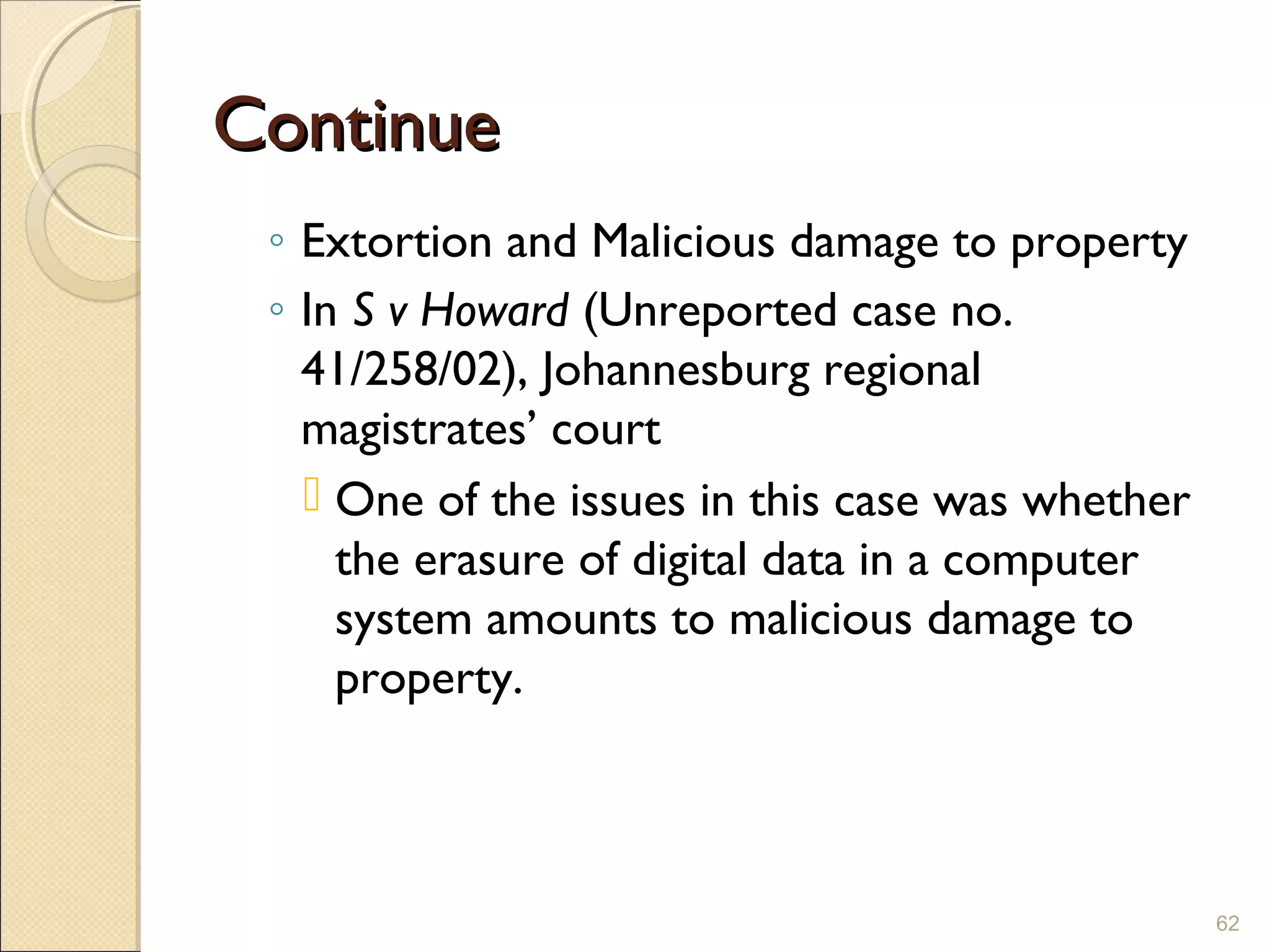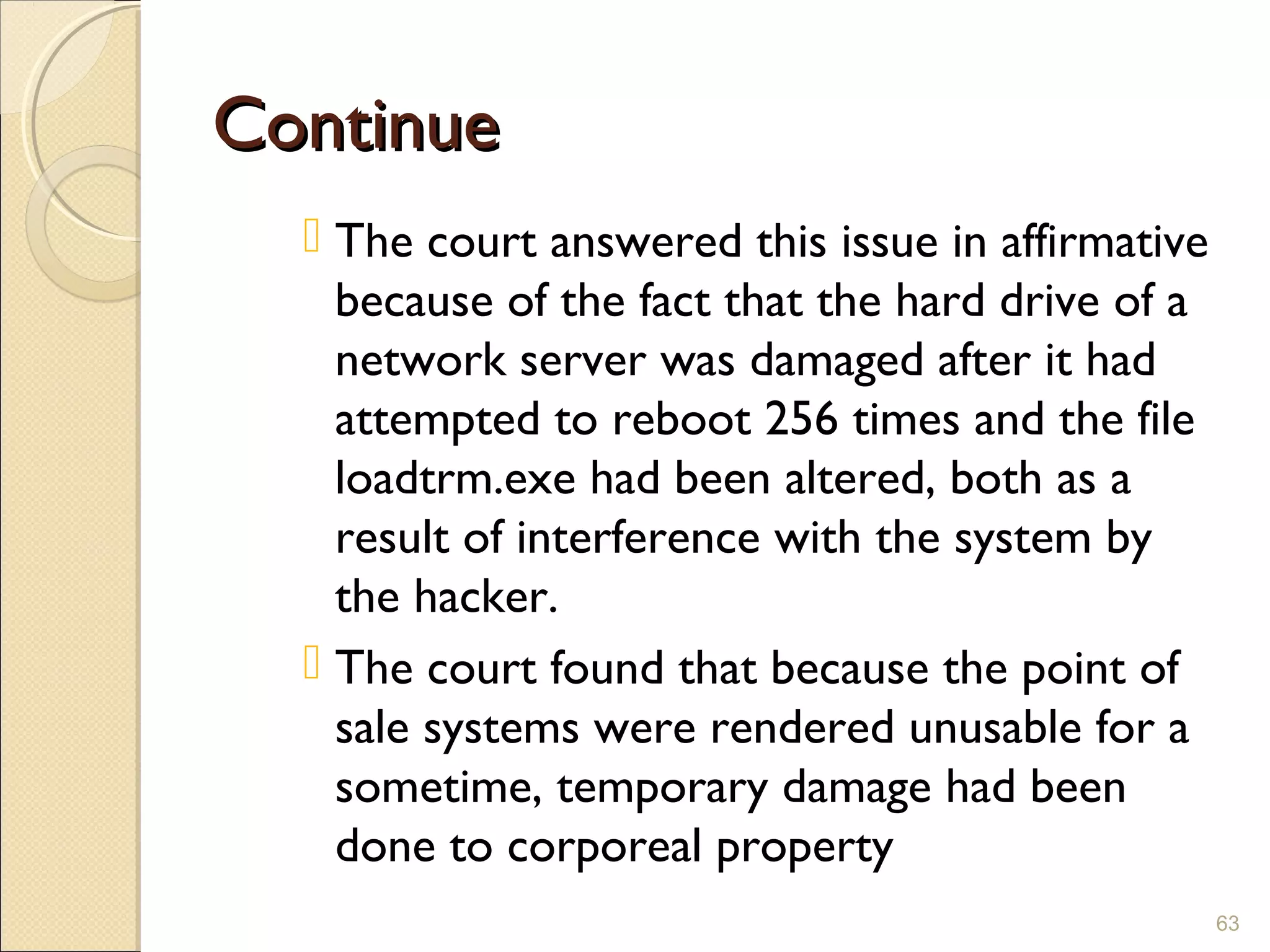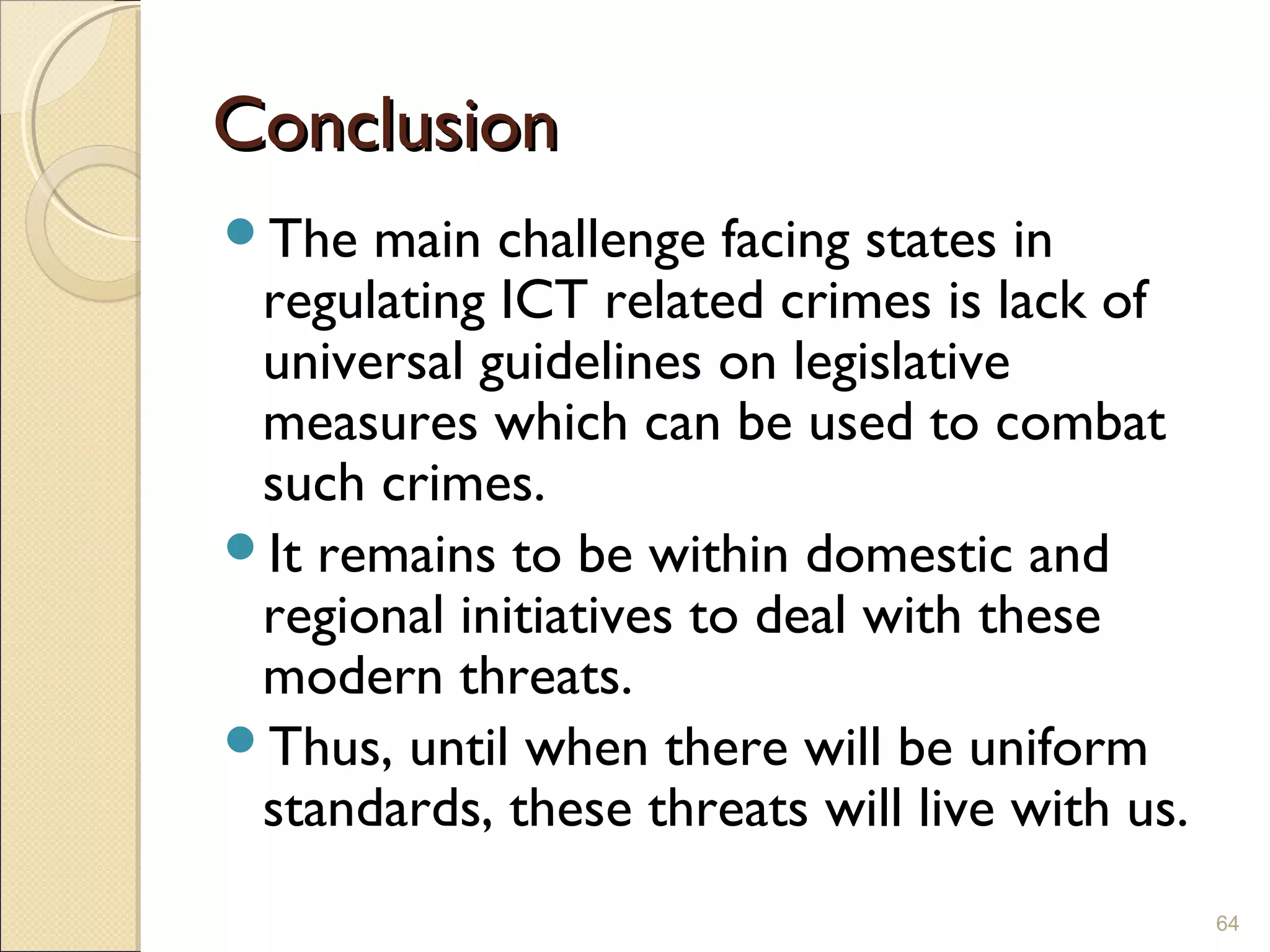The document discusses information technology (IT) law and various types of cybercrimes. It begins by defining what constitutes a computer and examines perspectives from different industries and jurisdictions. It then explores the relationship between law and computer technology, how IT law emerged from legal issues involving computers, and sources of IT law. The document distinguishes between computer crimes, where the computer is the target, and cyber crimes, which are enabled by computers but may have existed previously. It proceeds to examine examples of computer fraud, hacking, unauthorized data modification, and dissemination of malicious software.
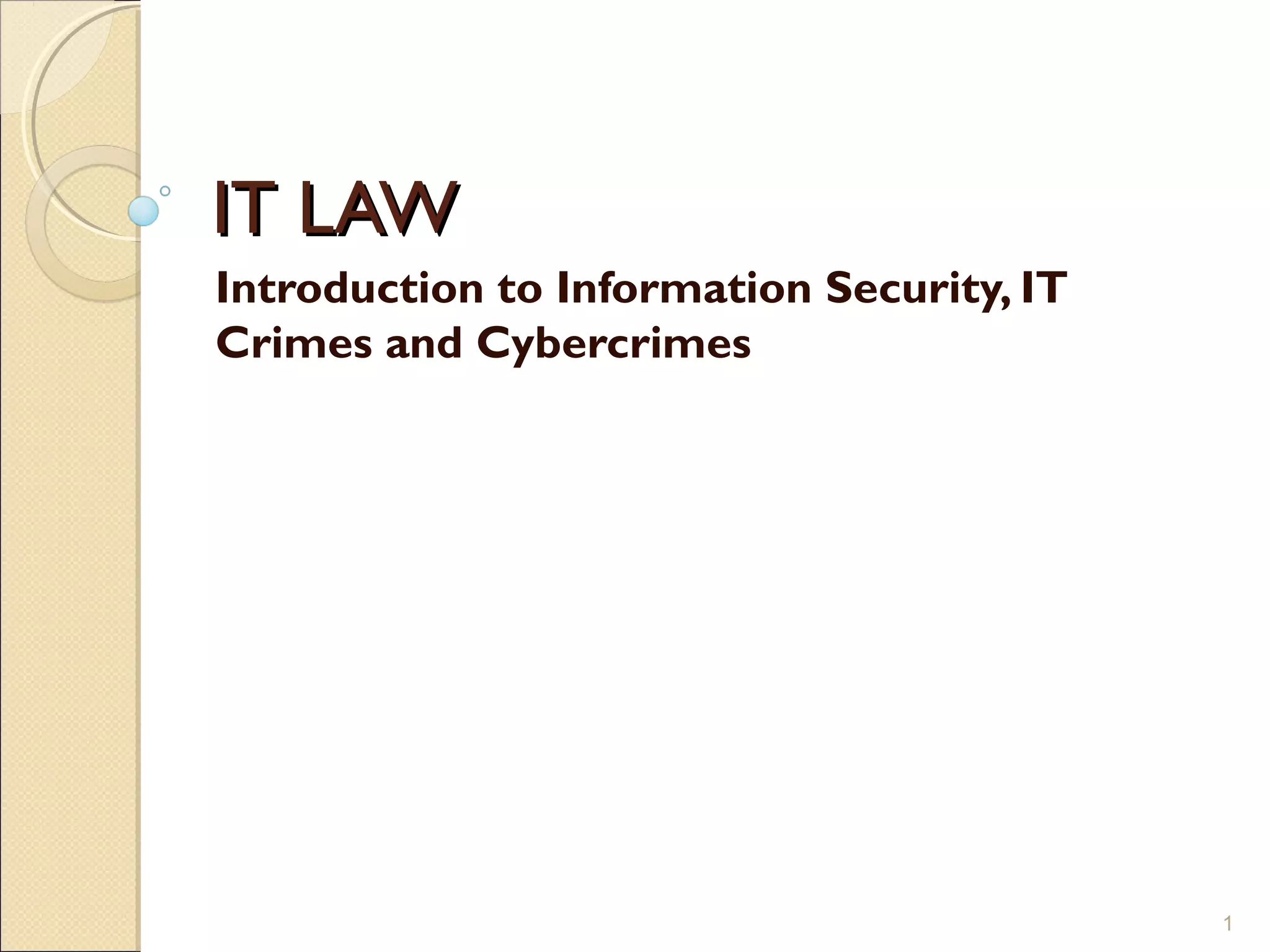
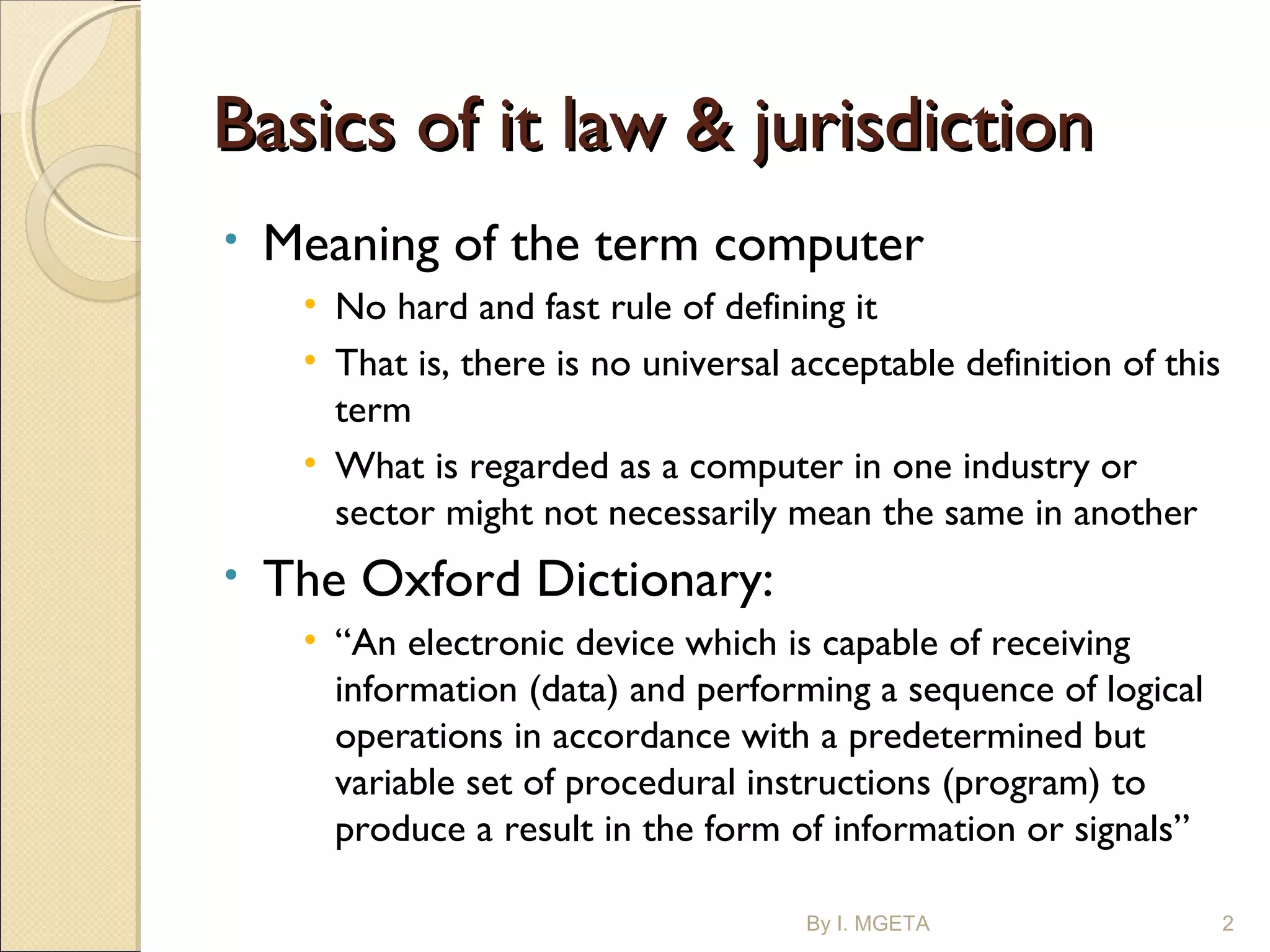
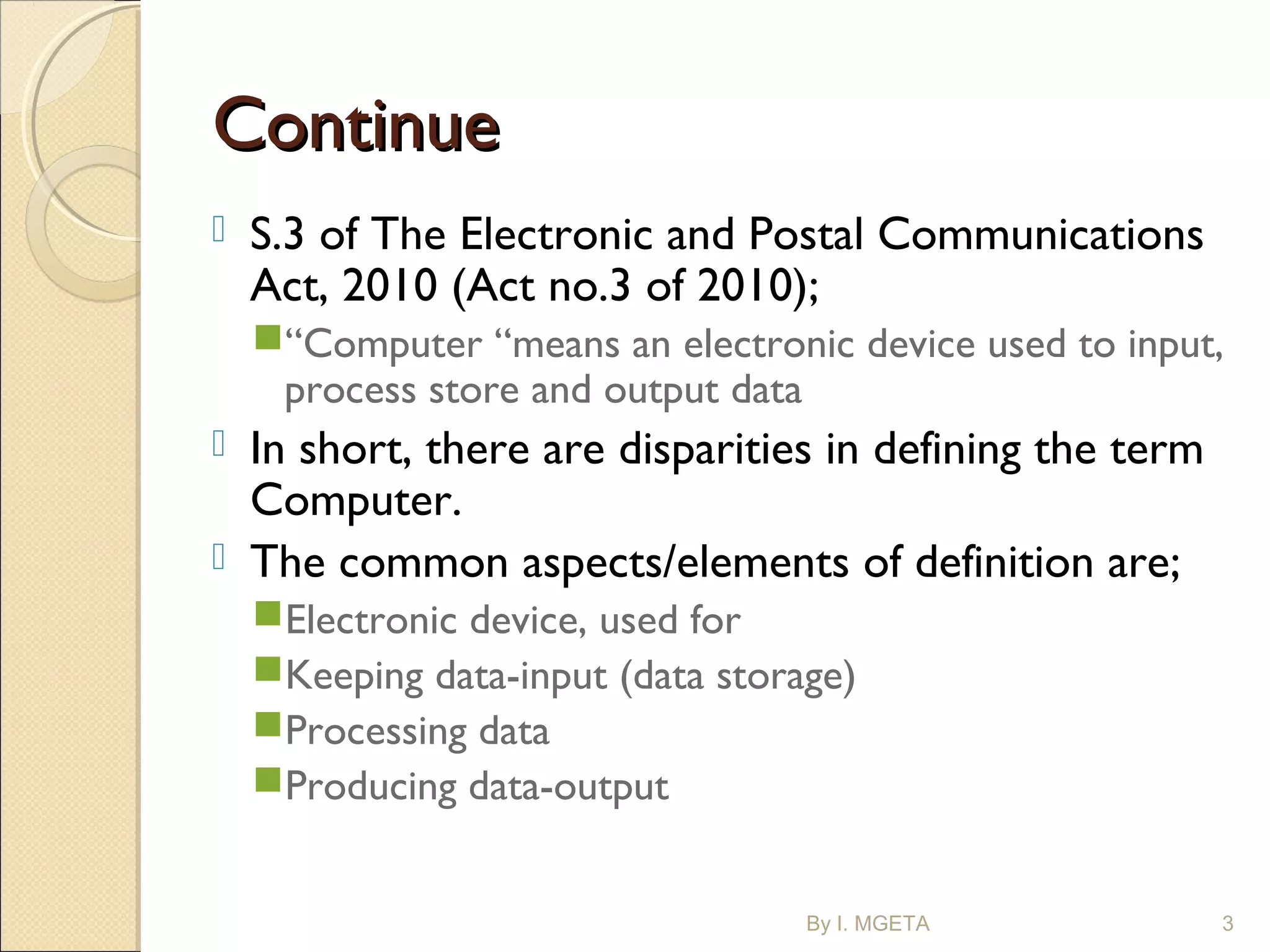
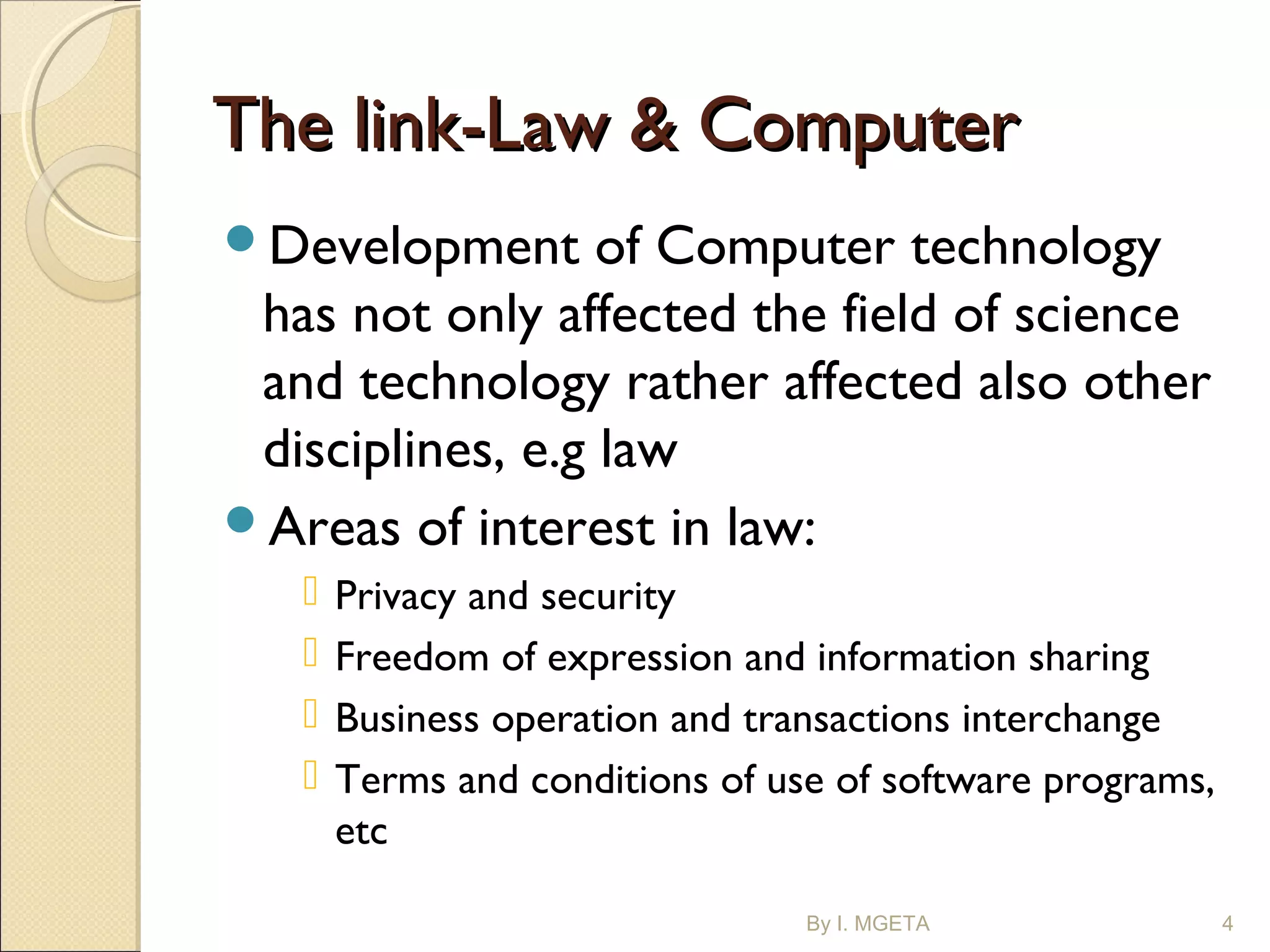

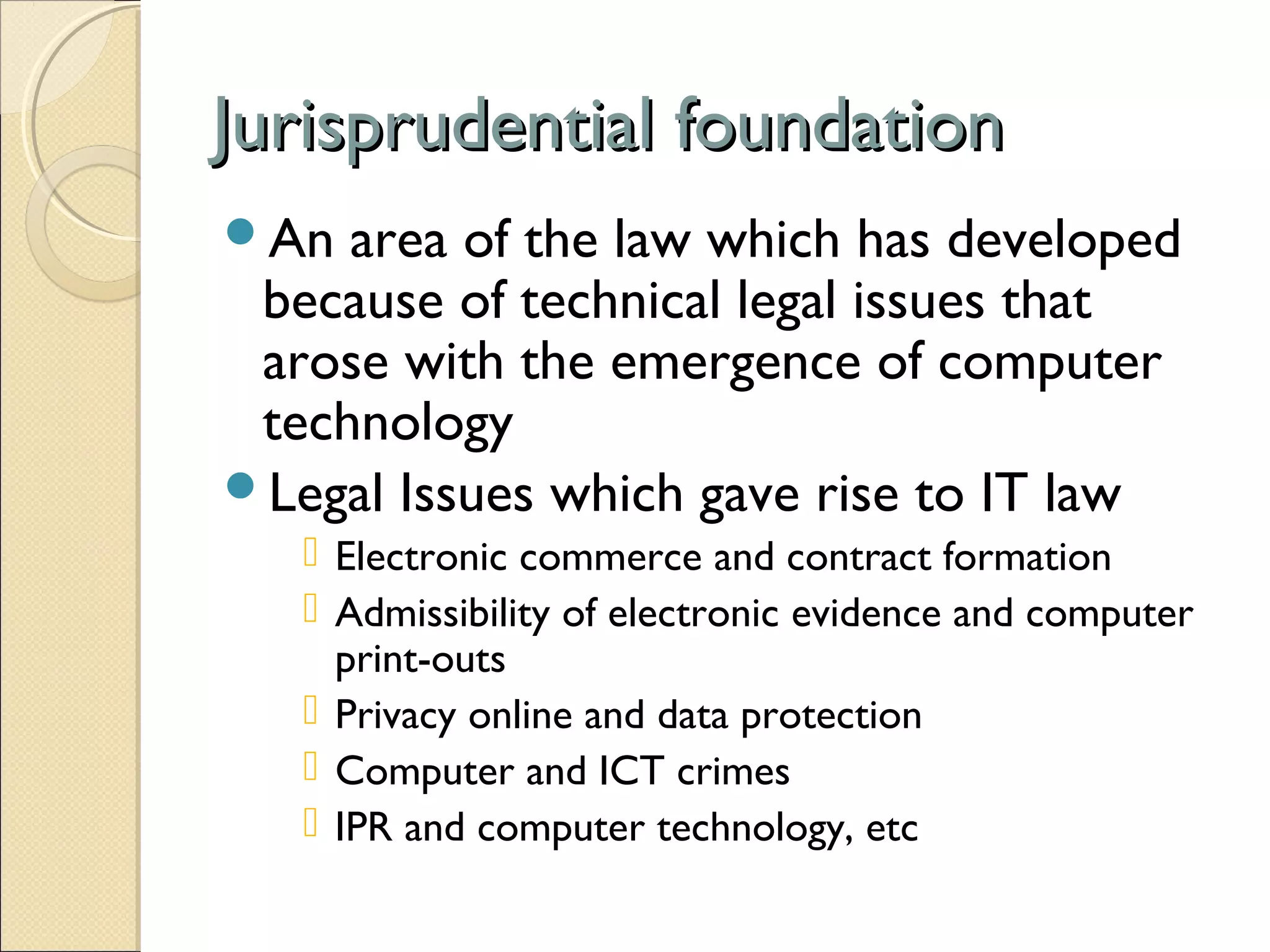


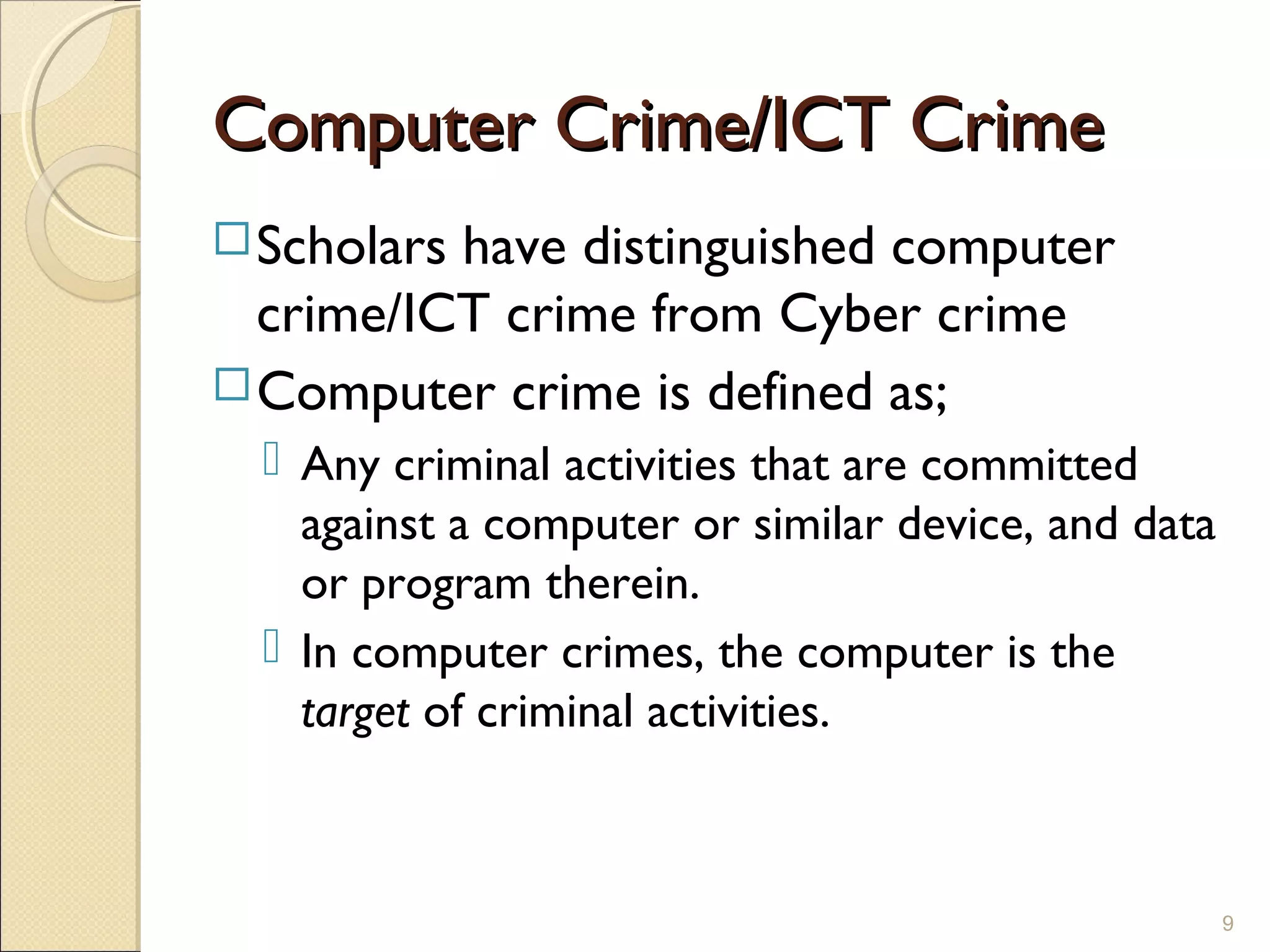
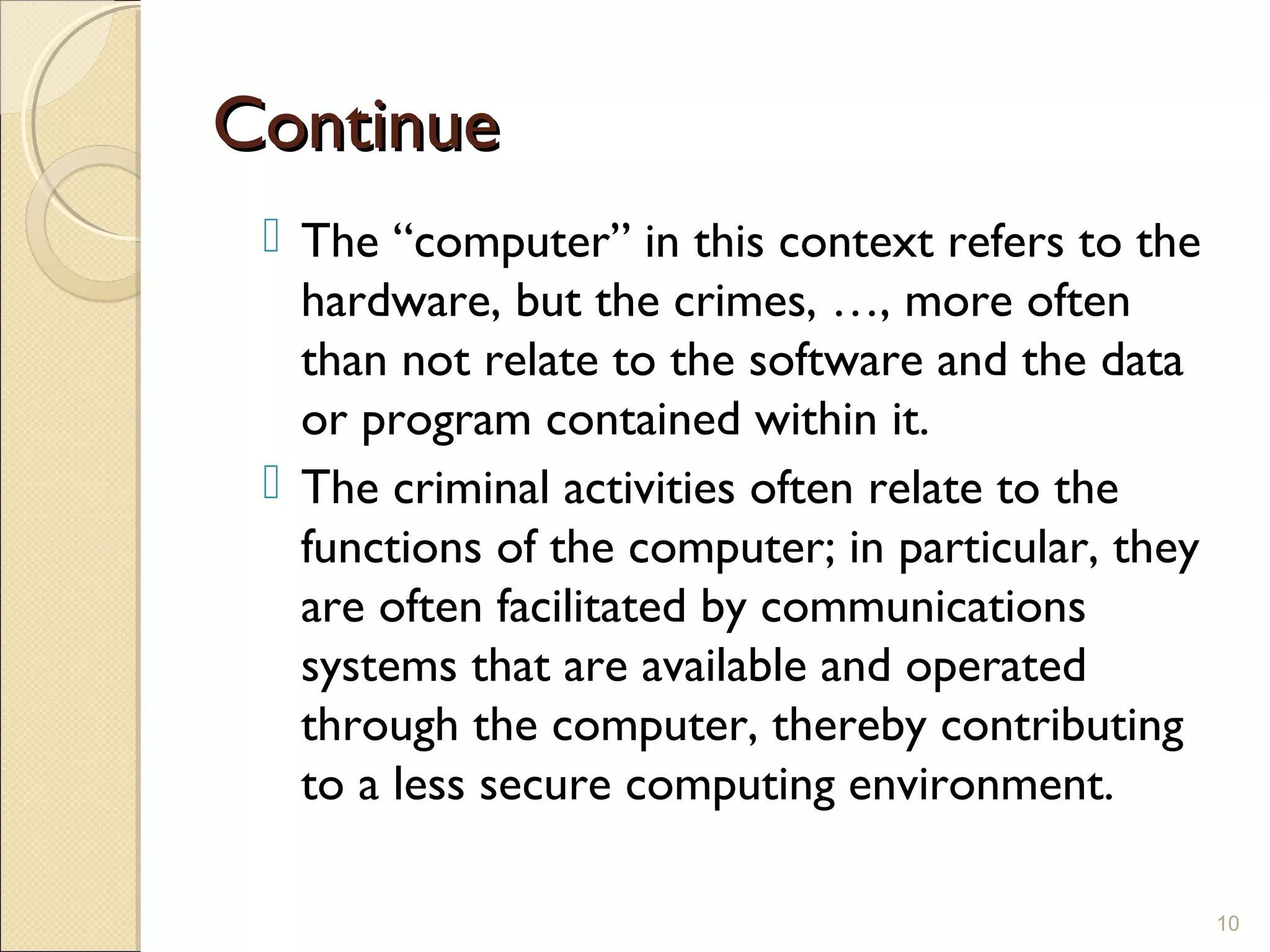
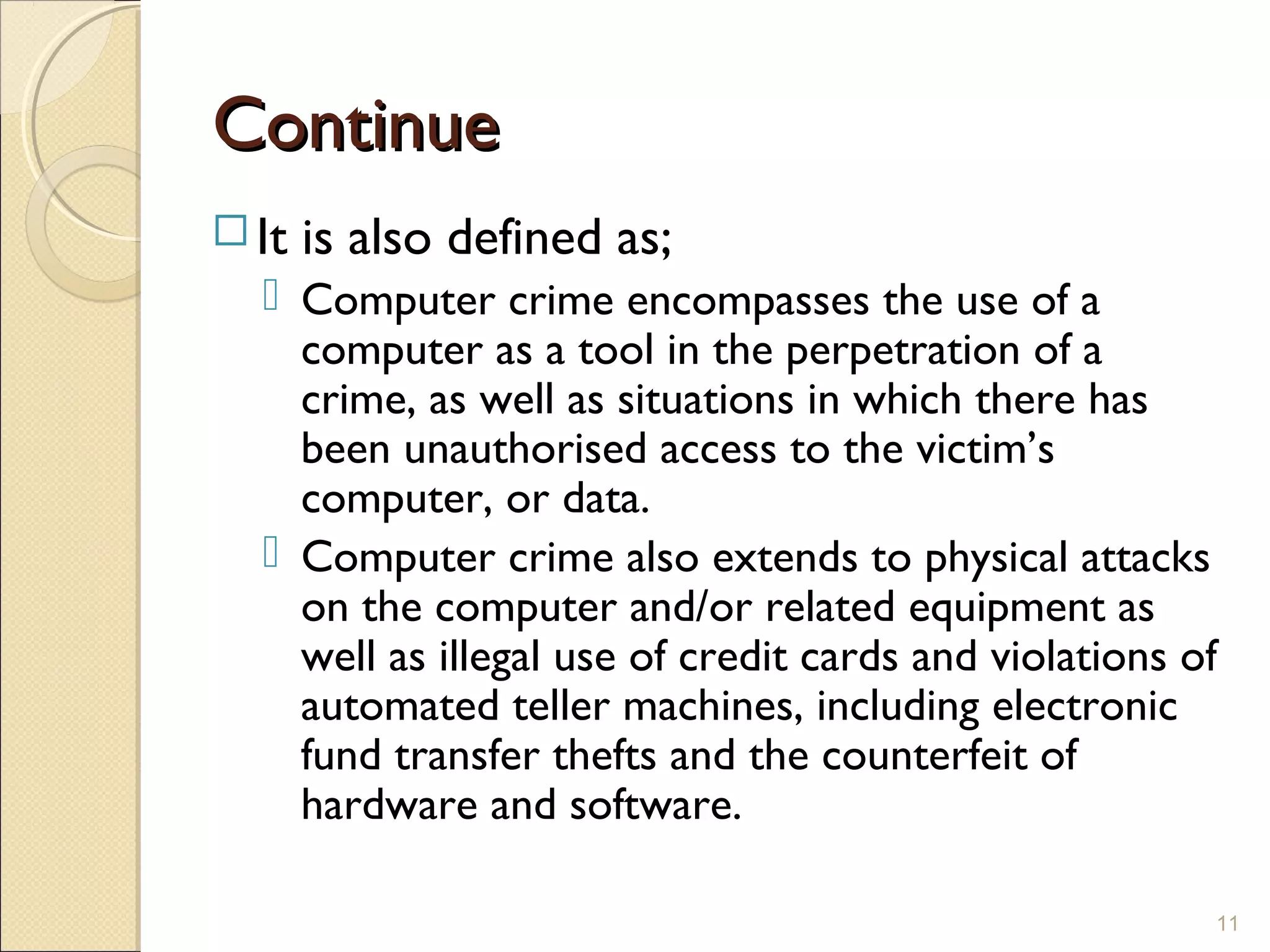
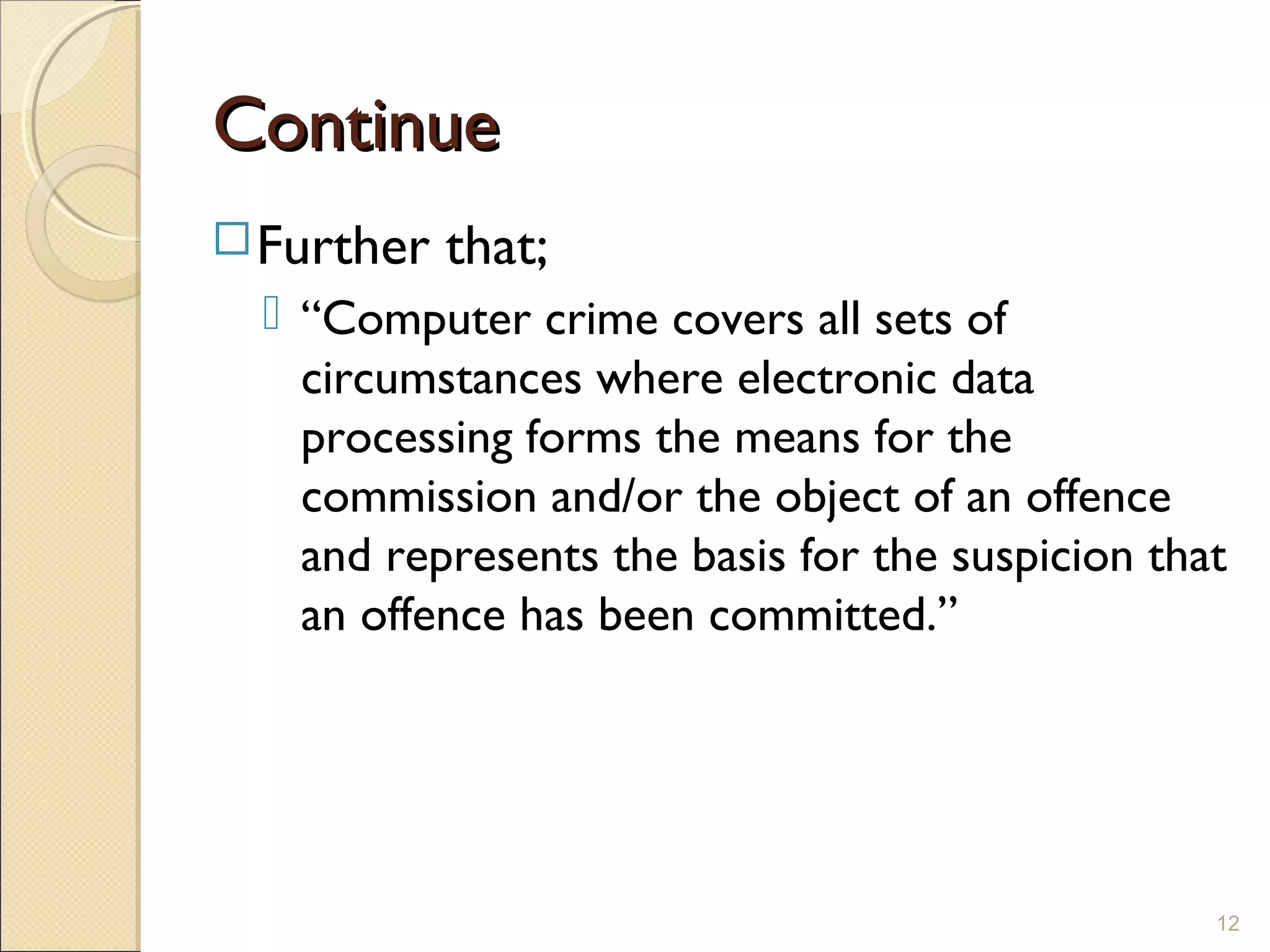
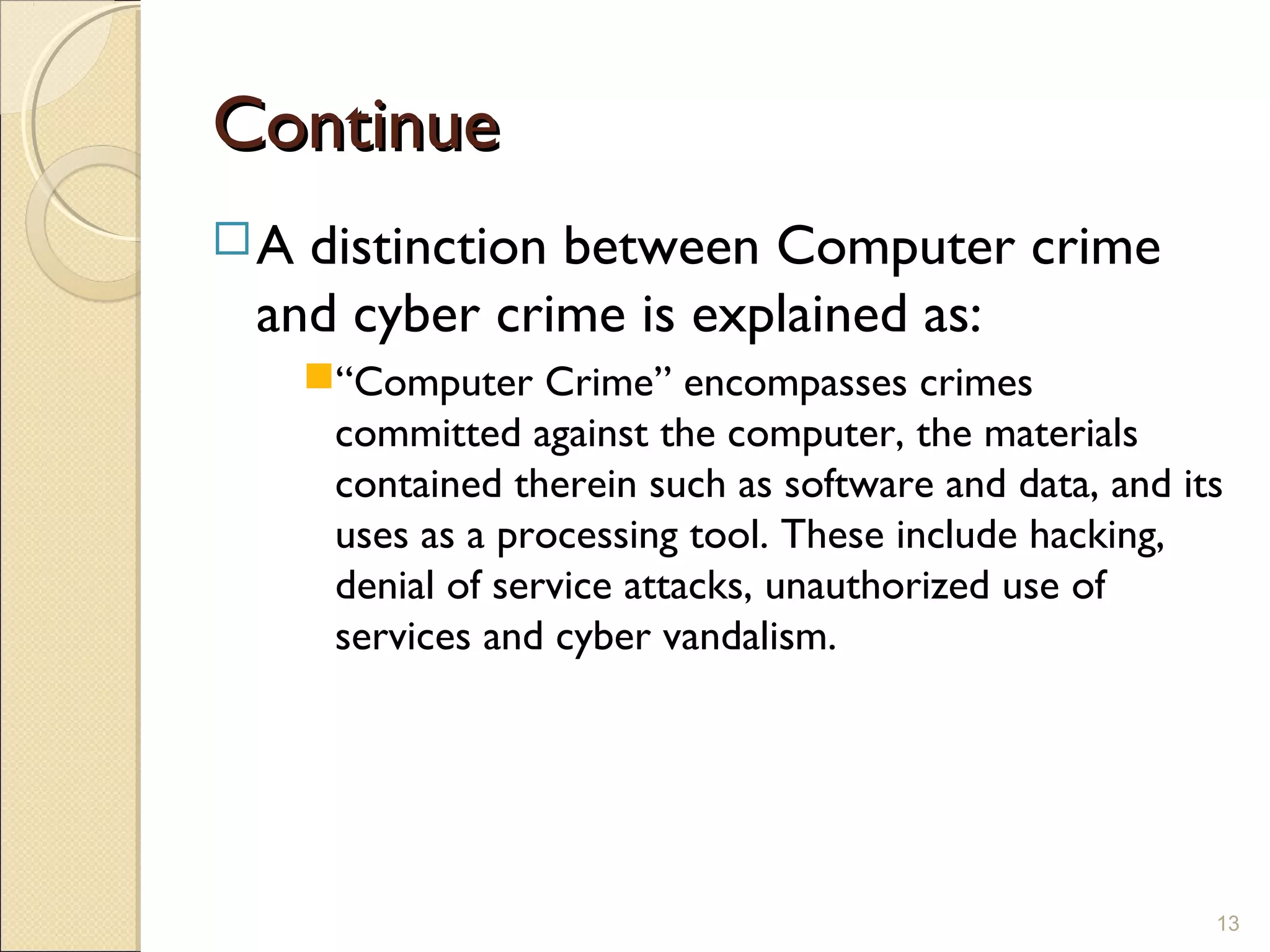
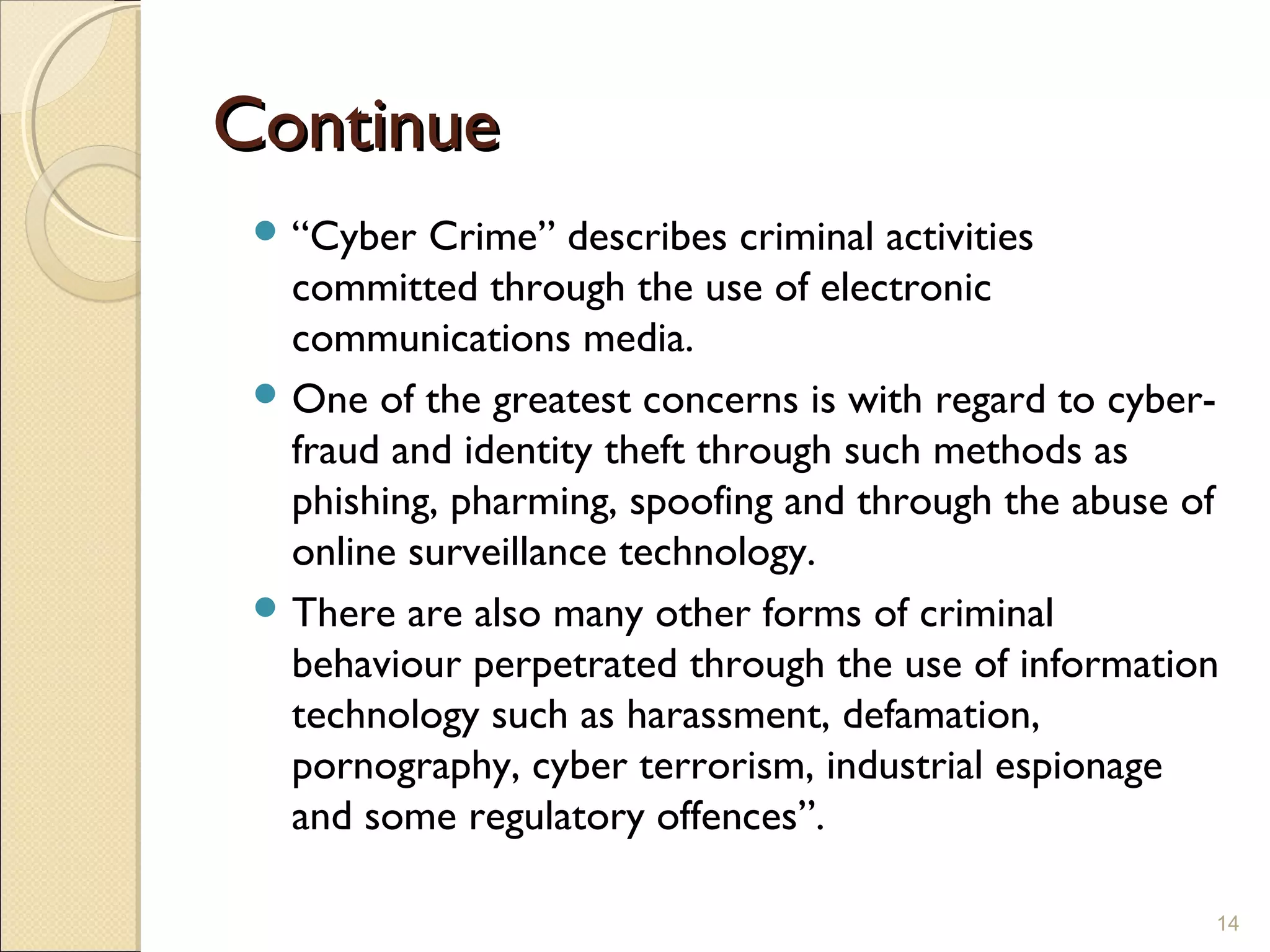
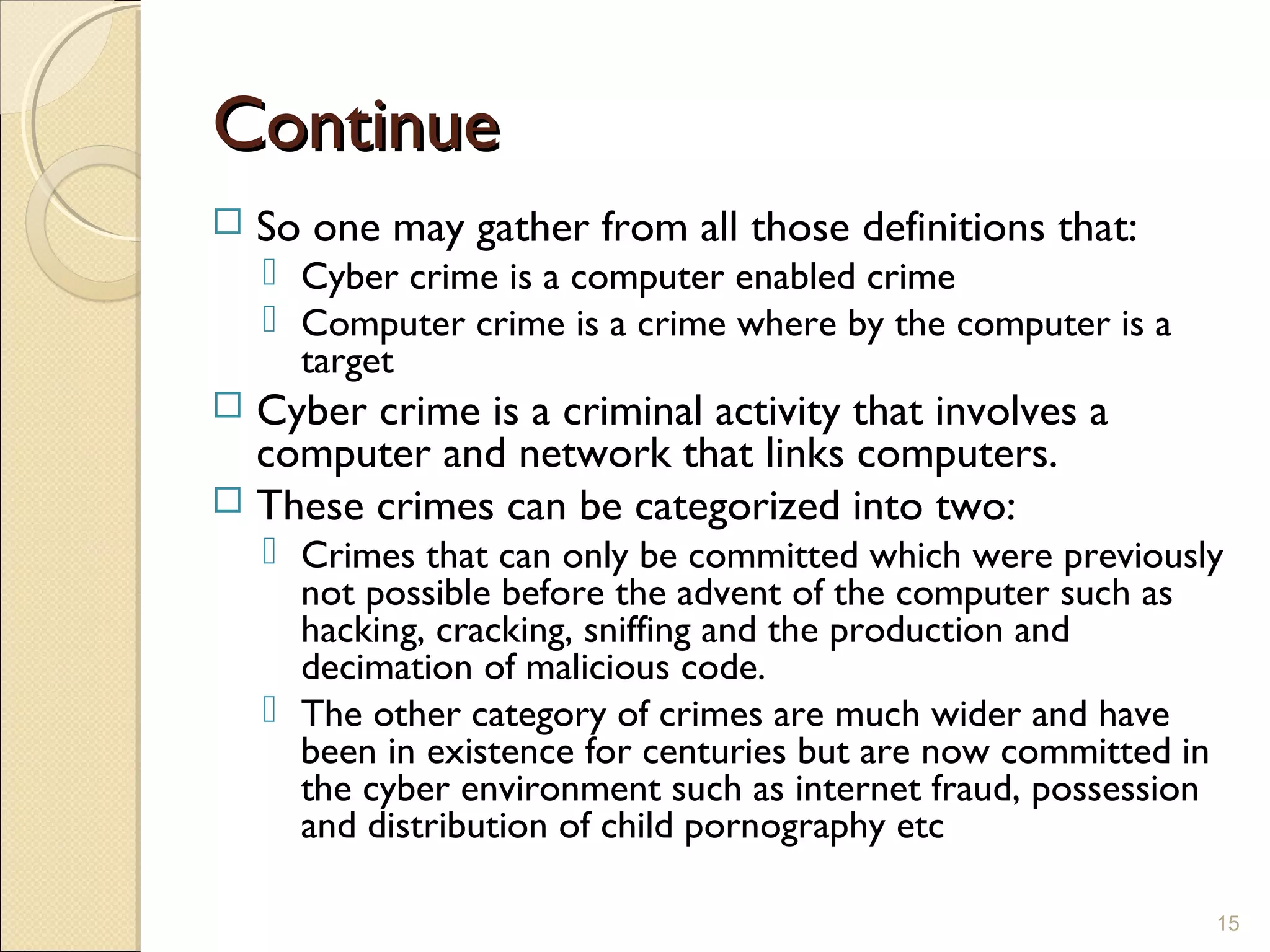
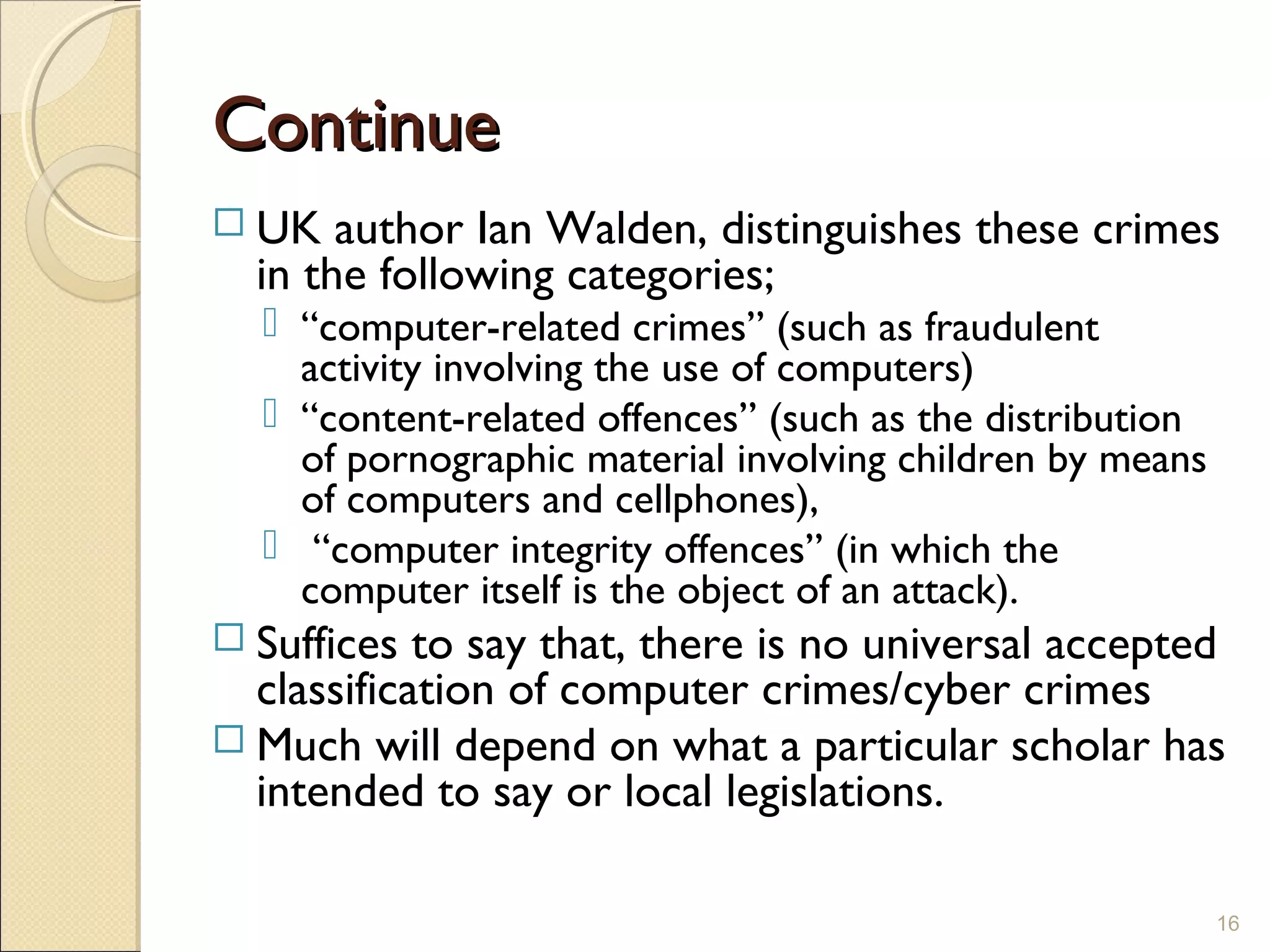
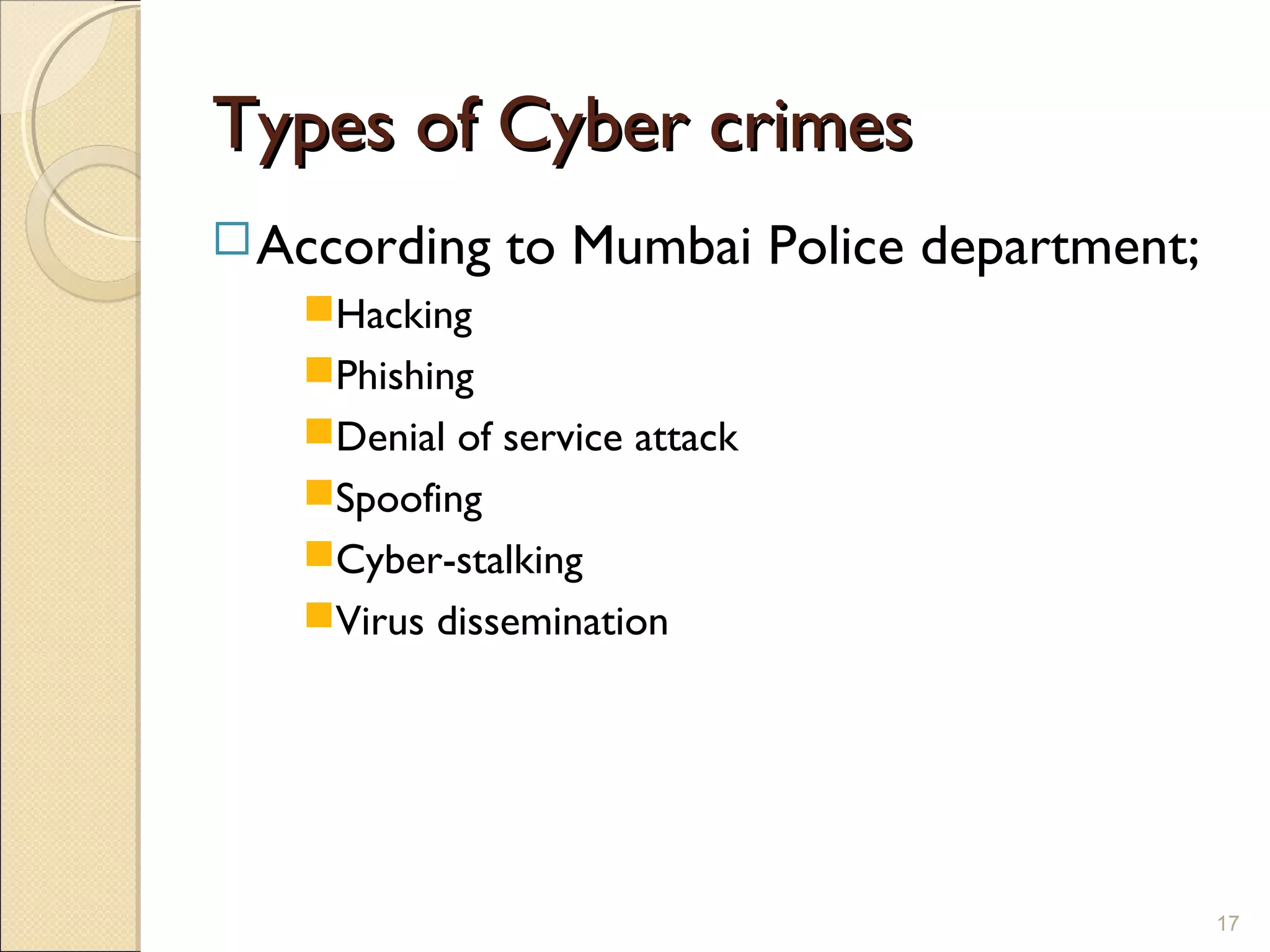
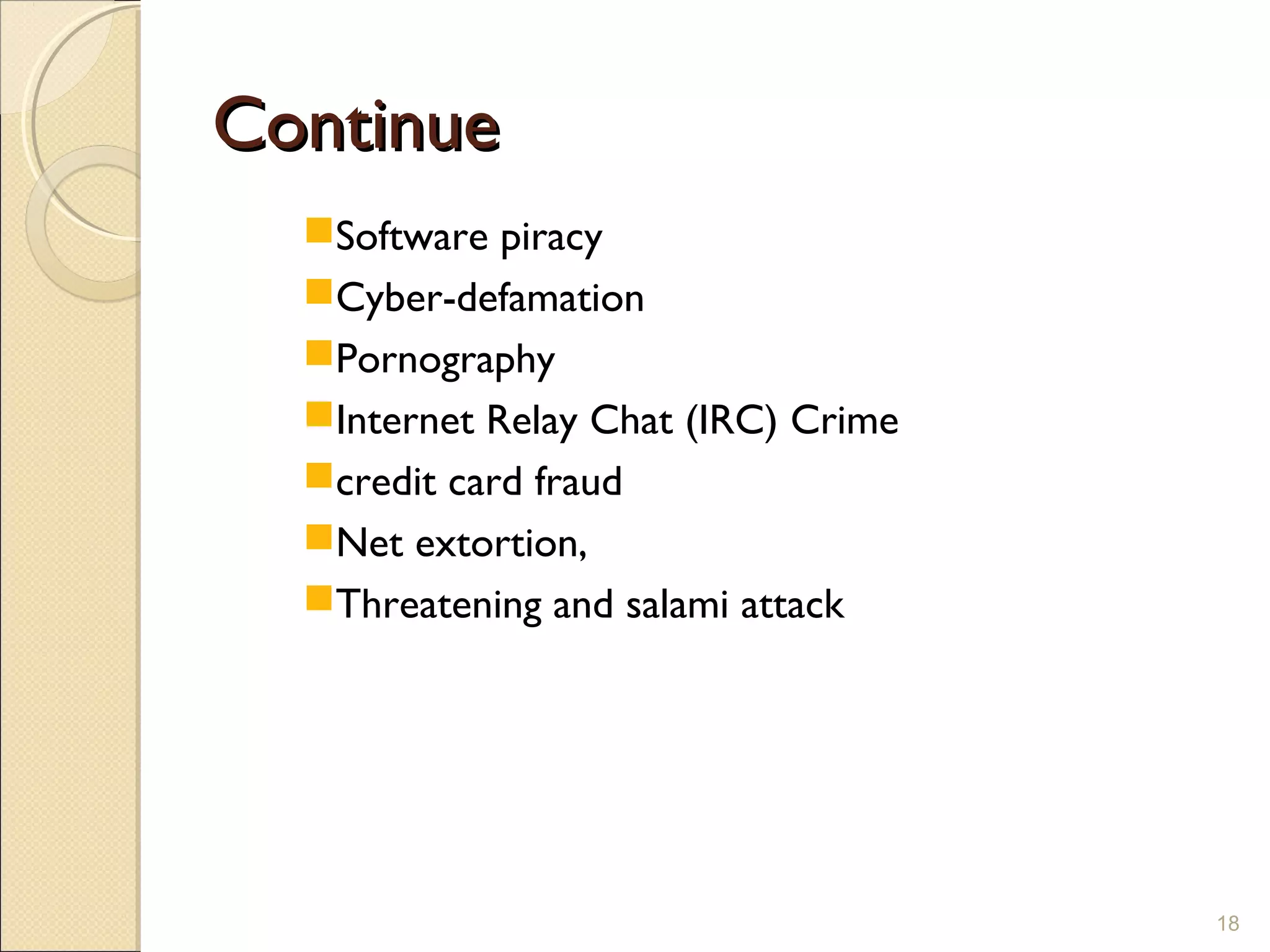
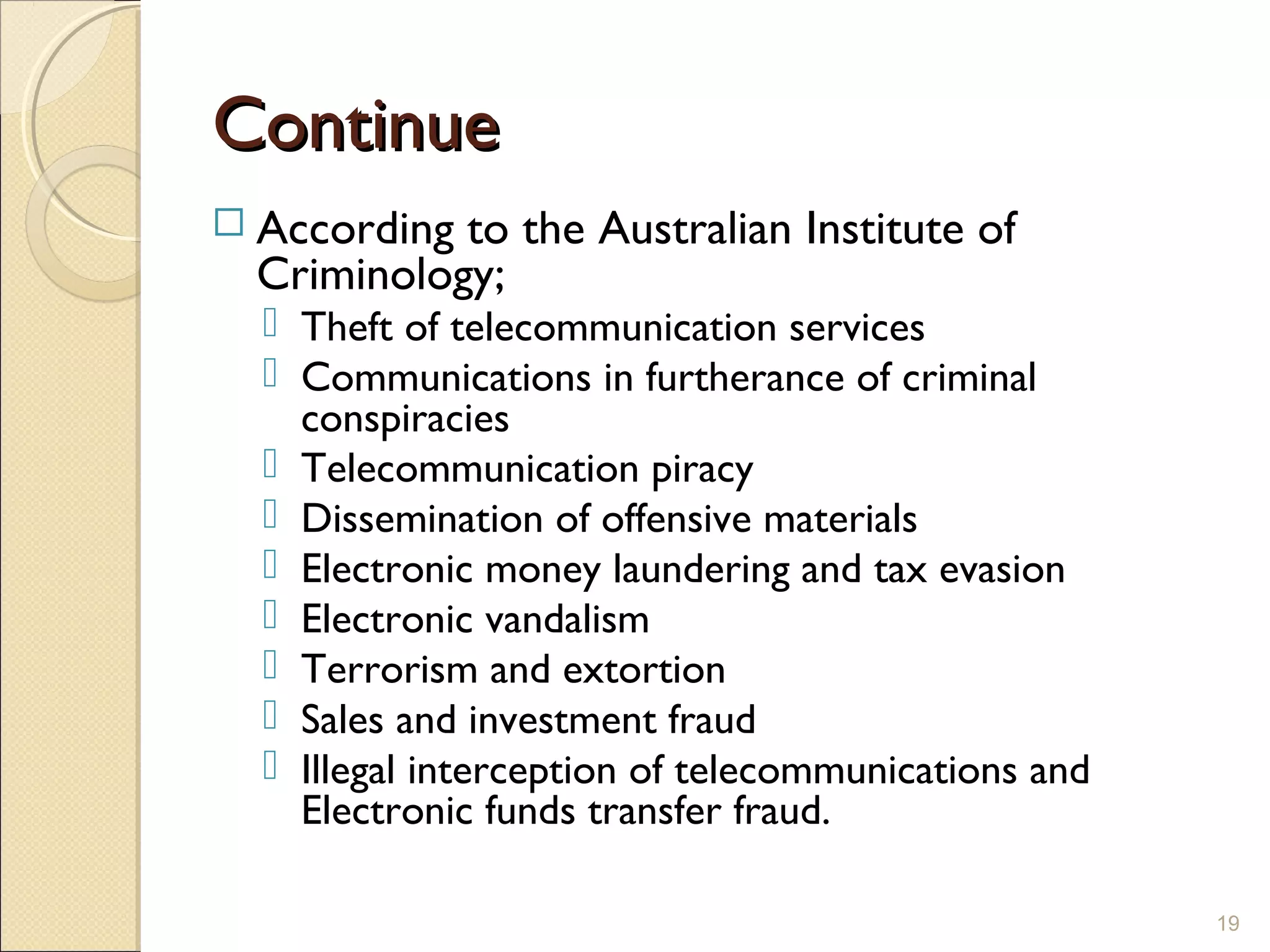
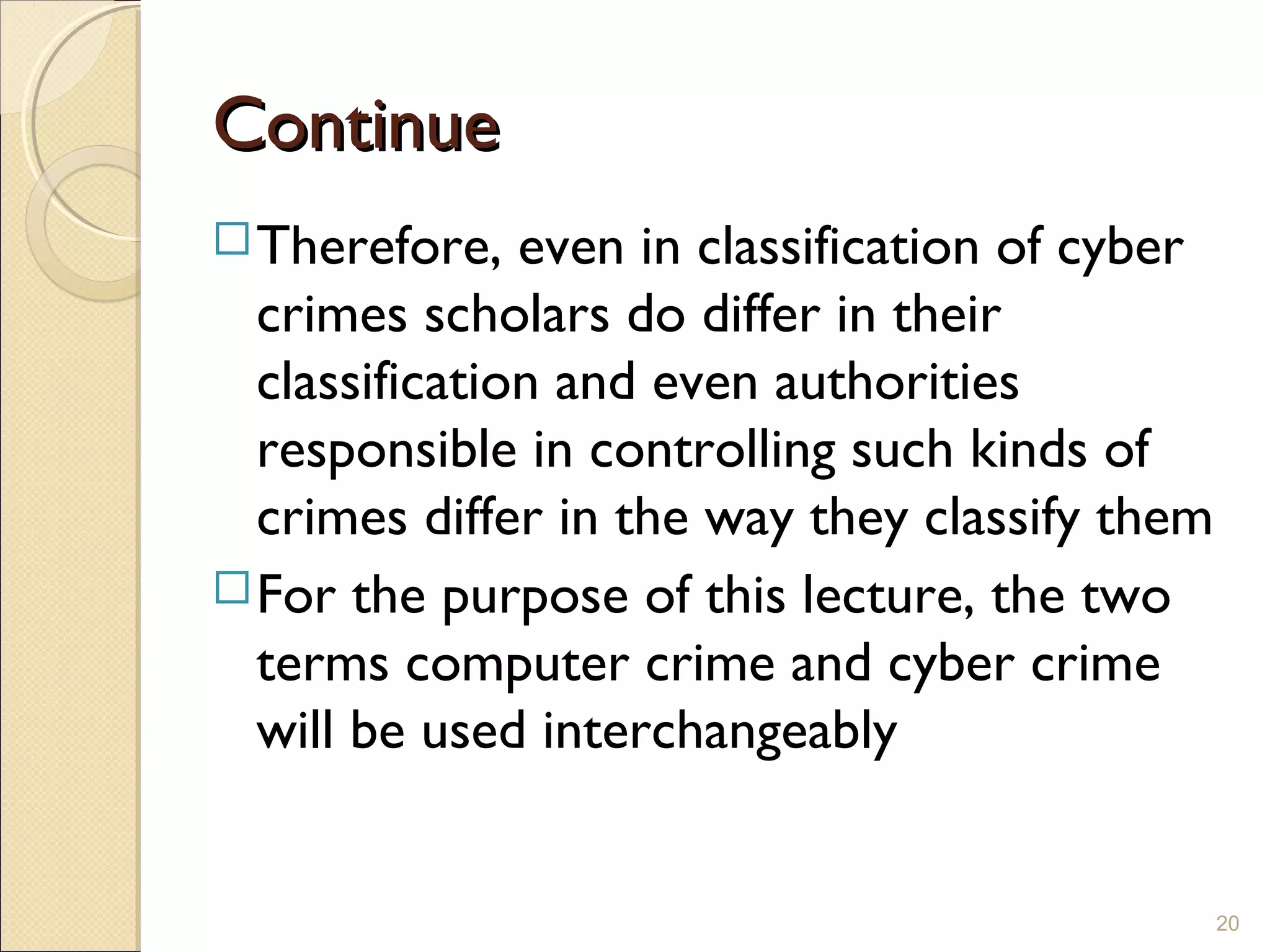

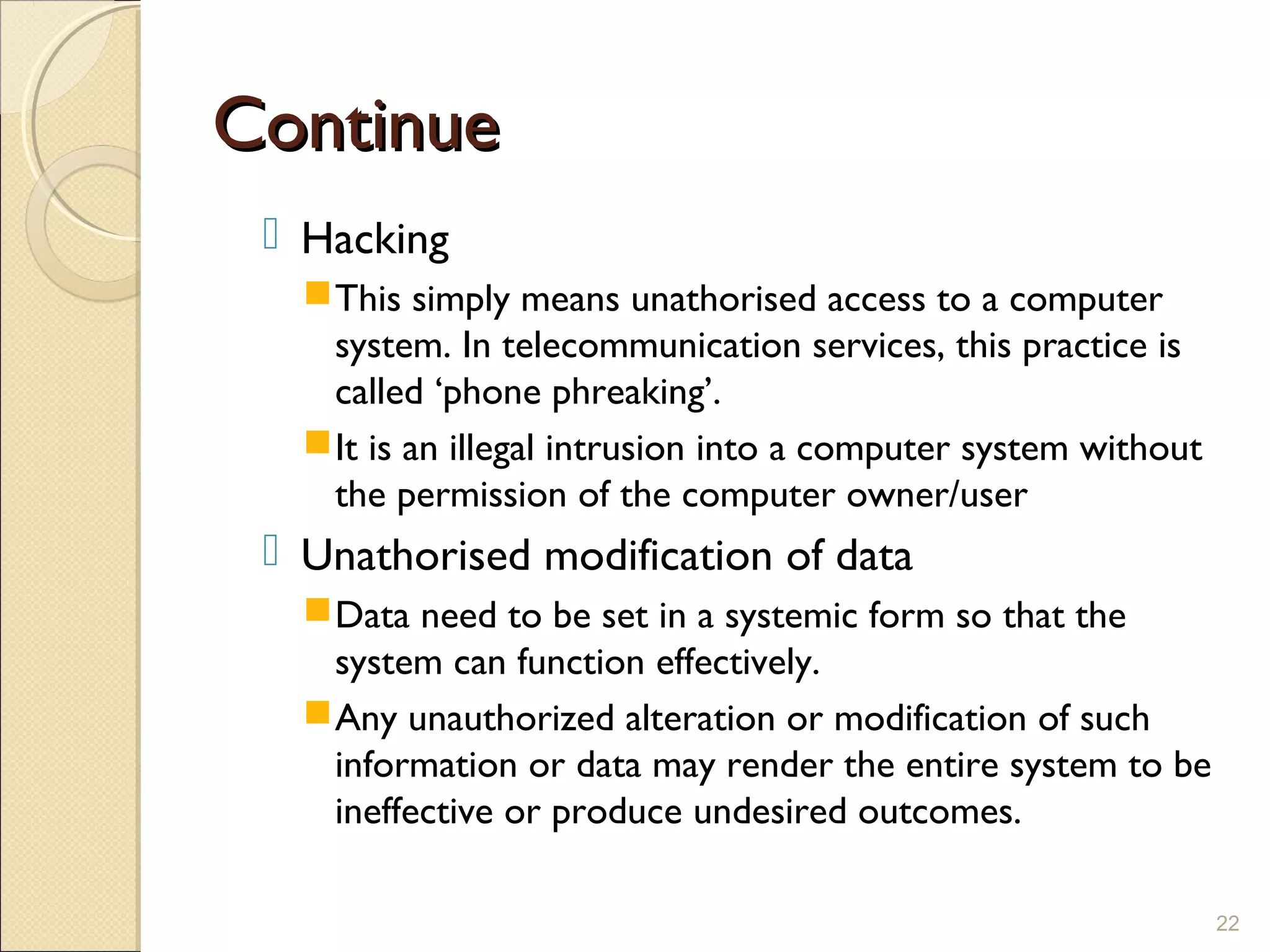
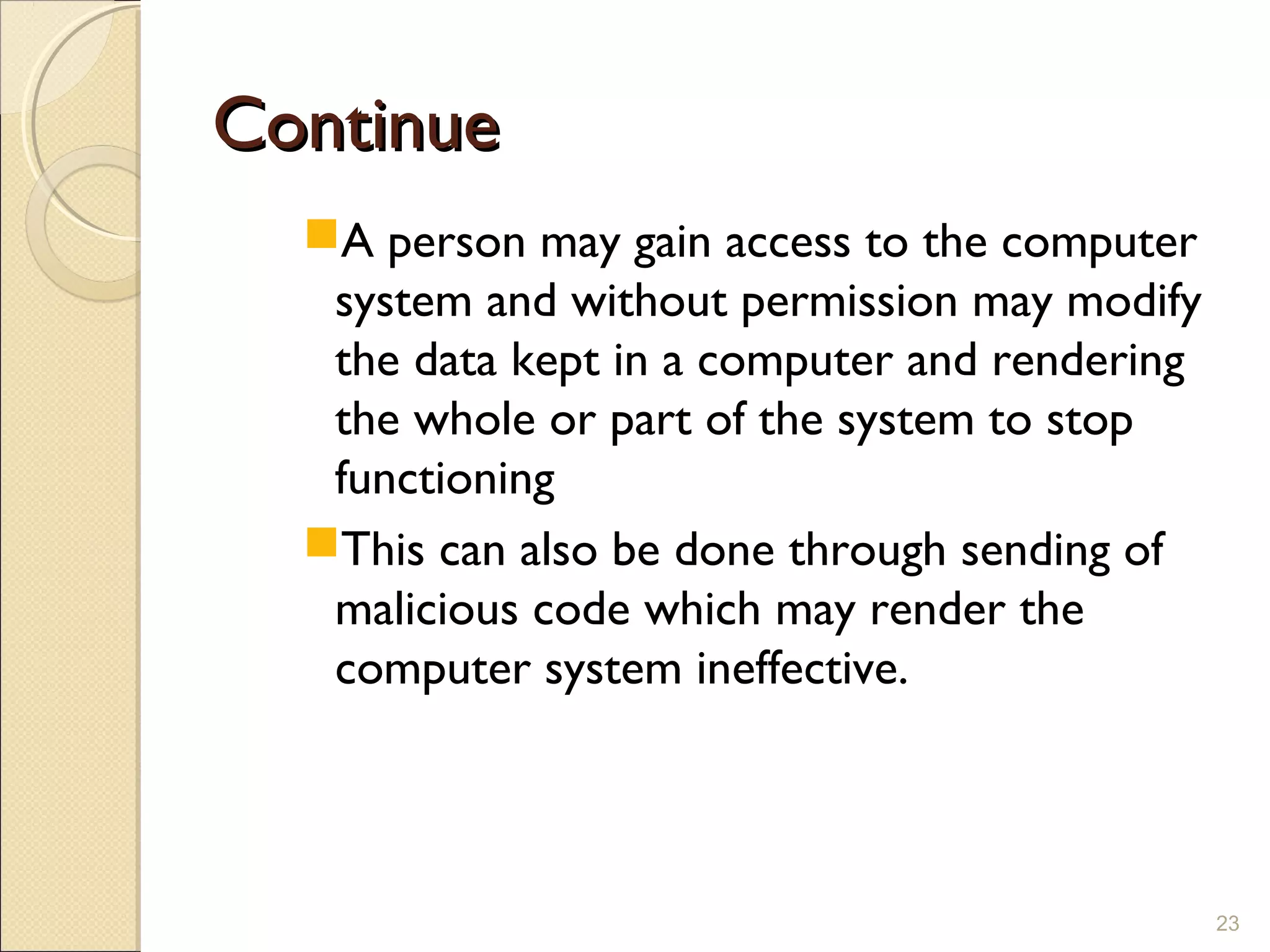

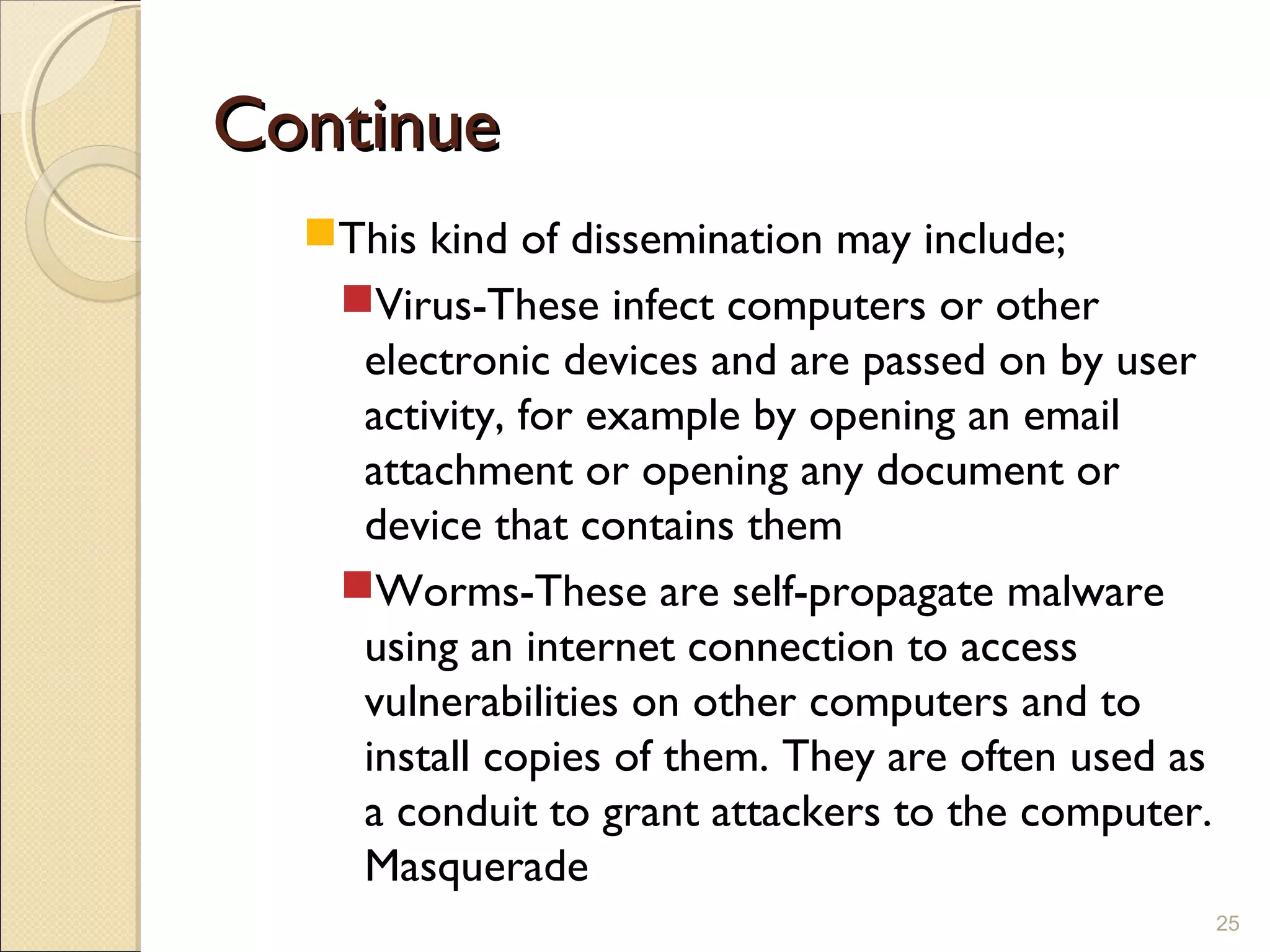
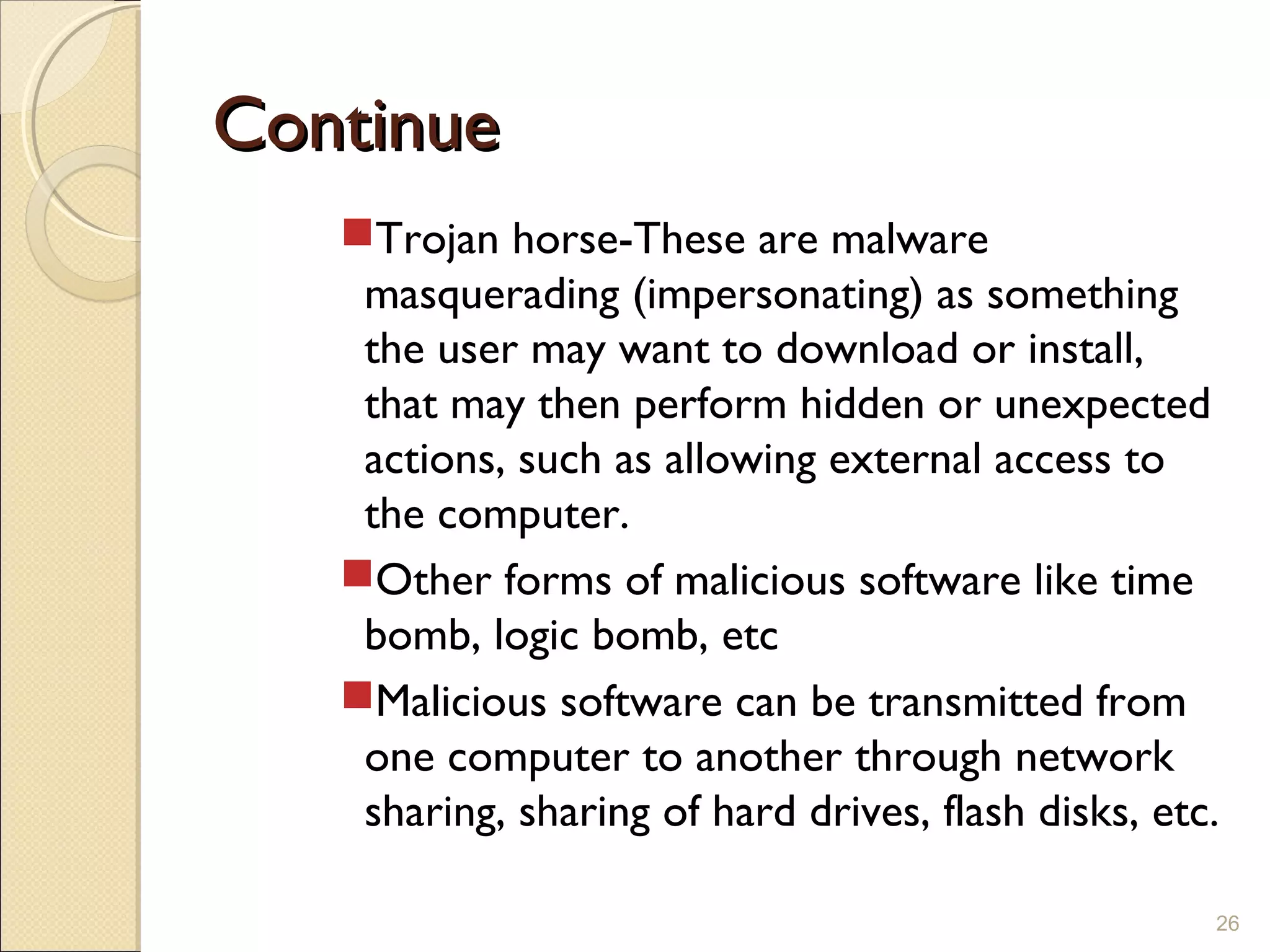

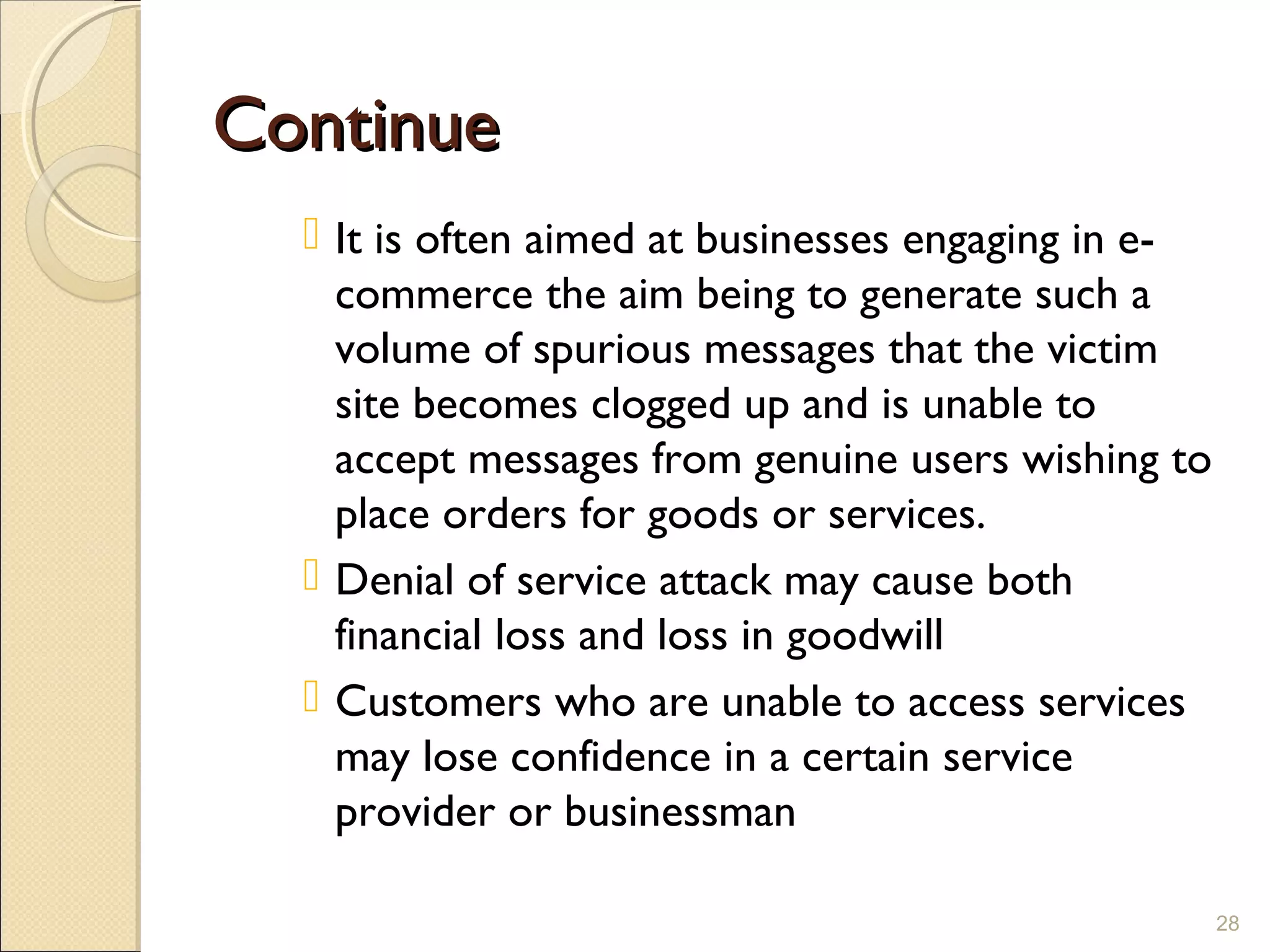

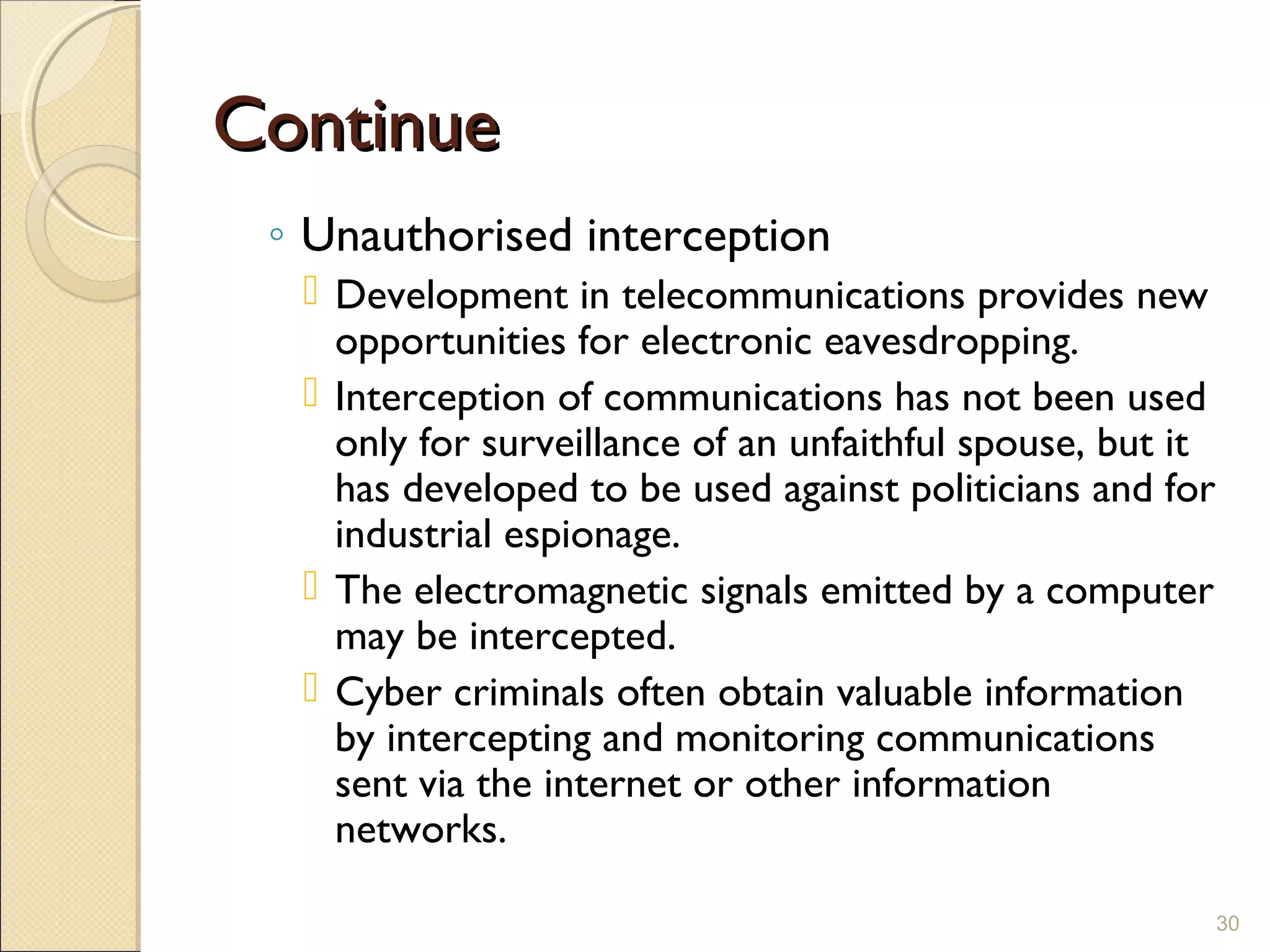
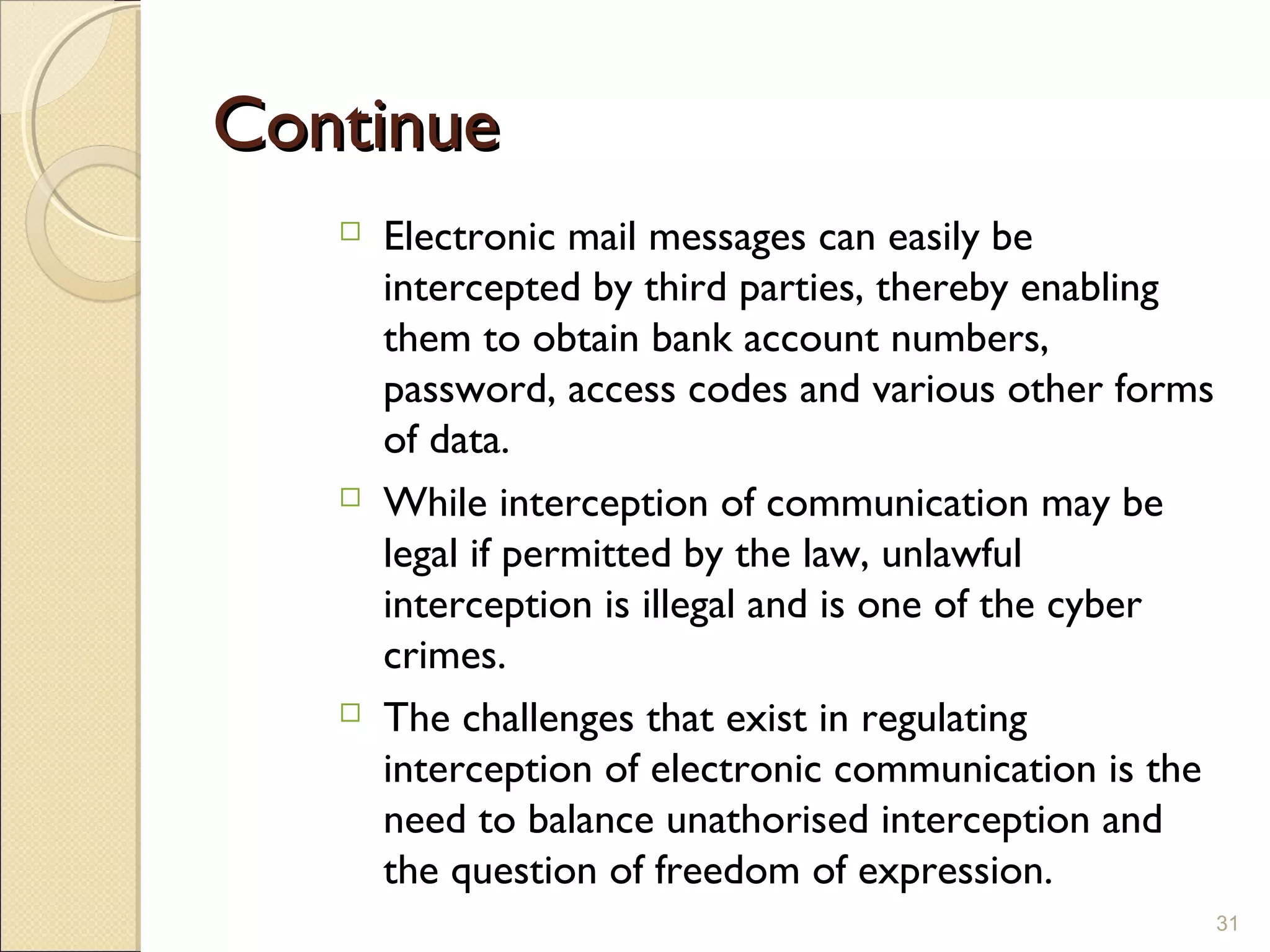

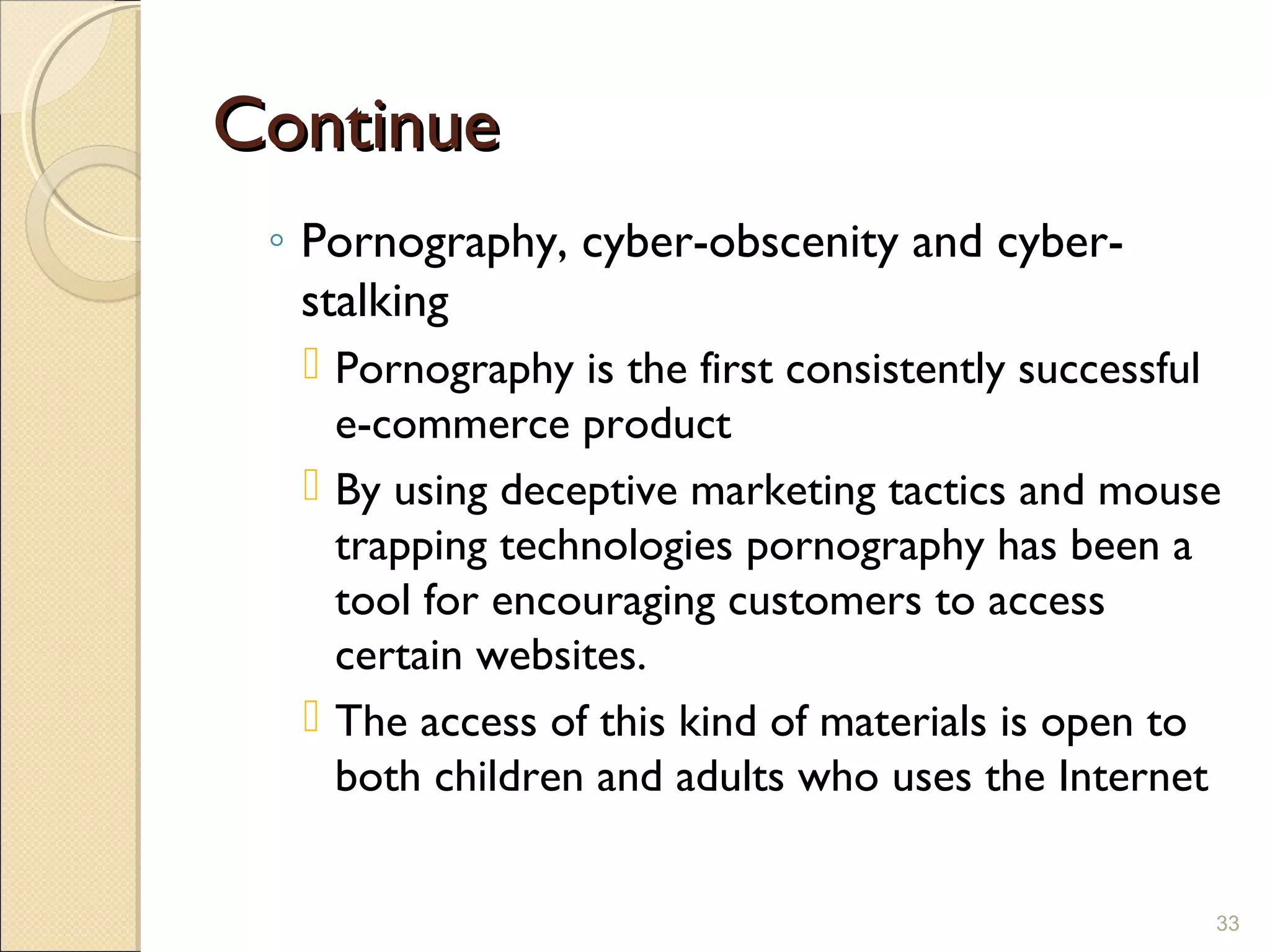

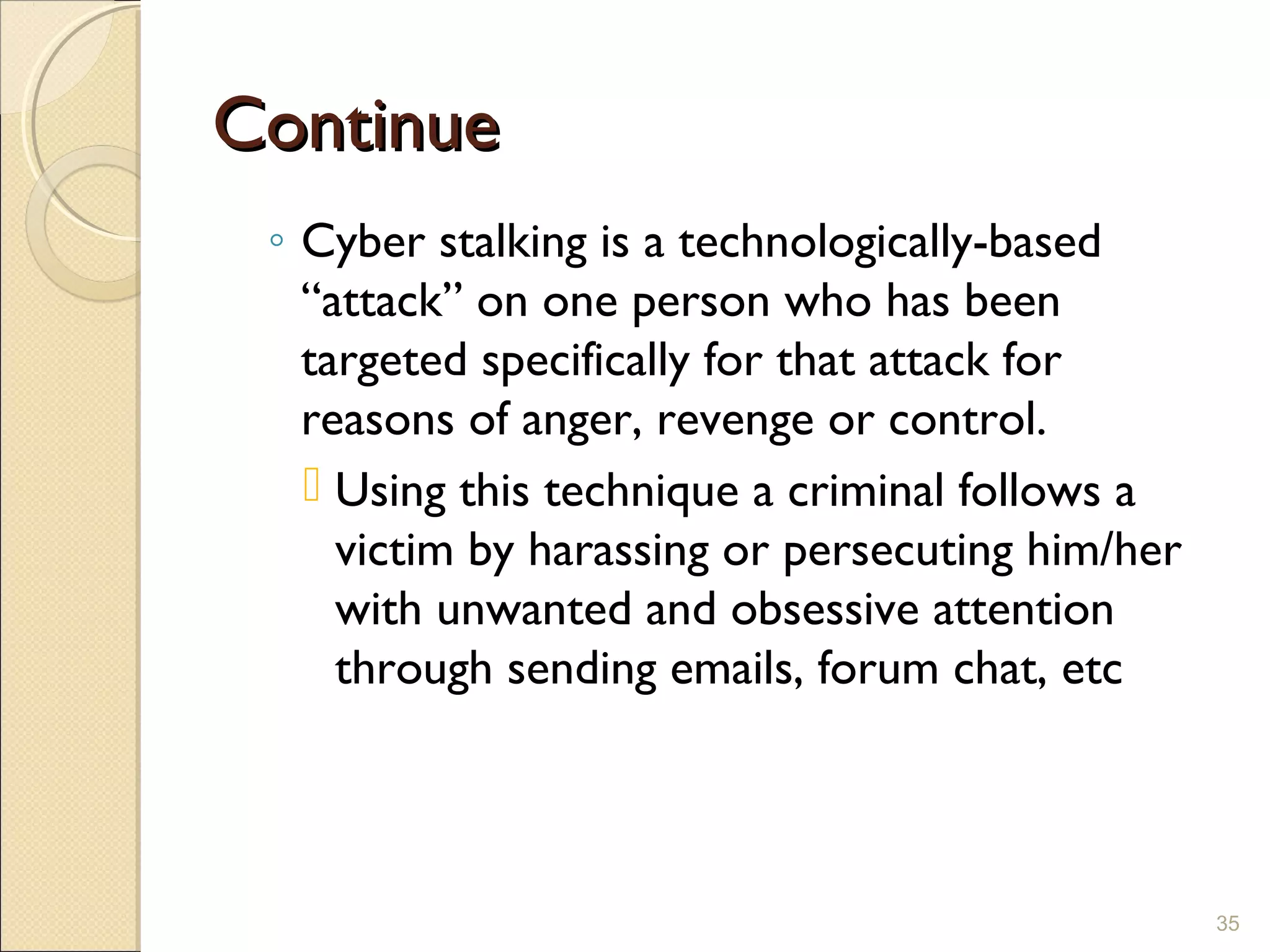
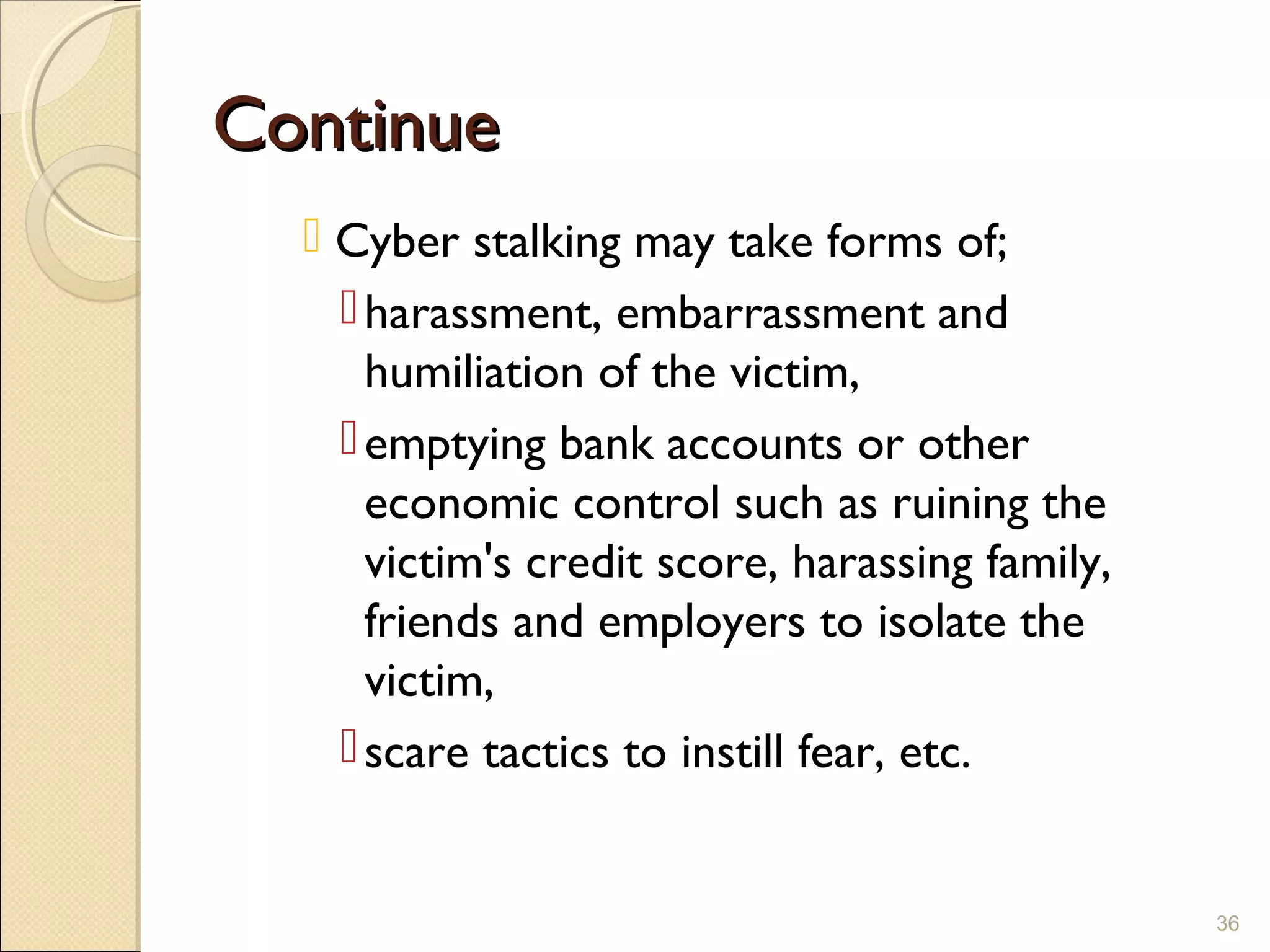
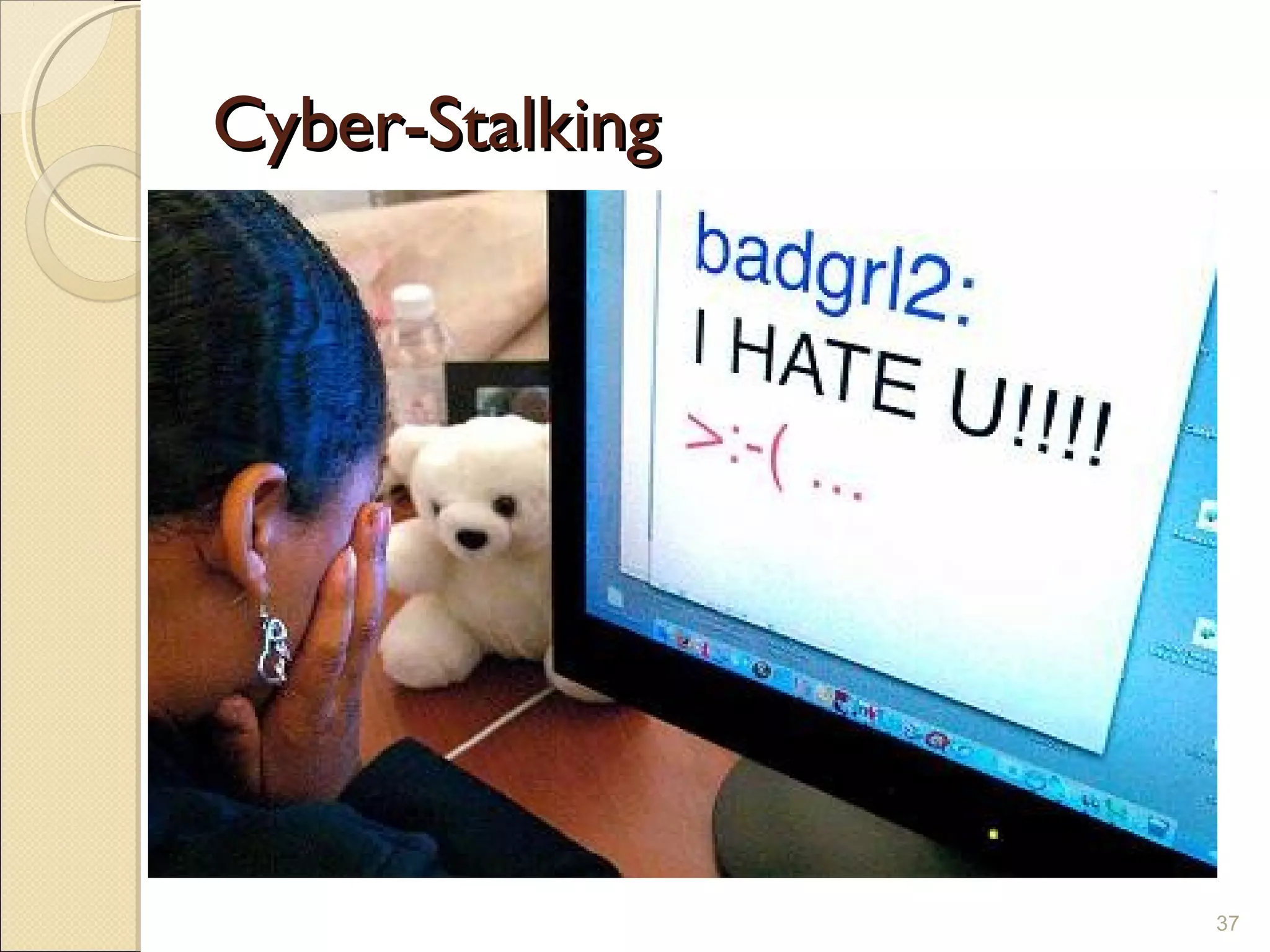
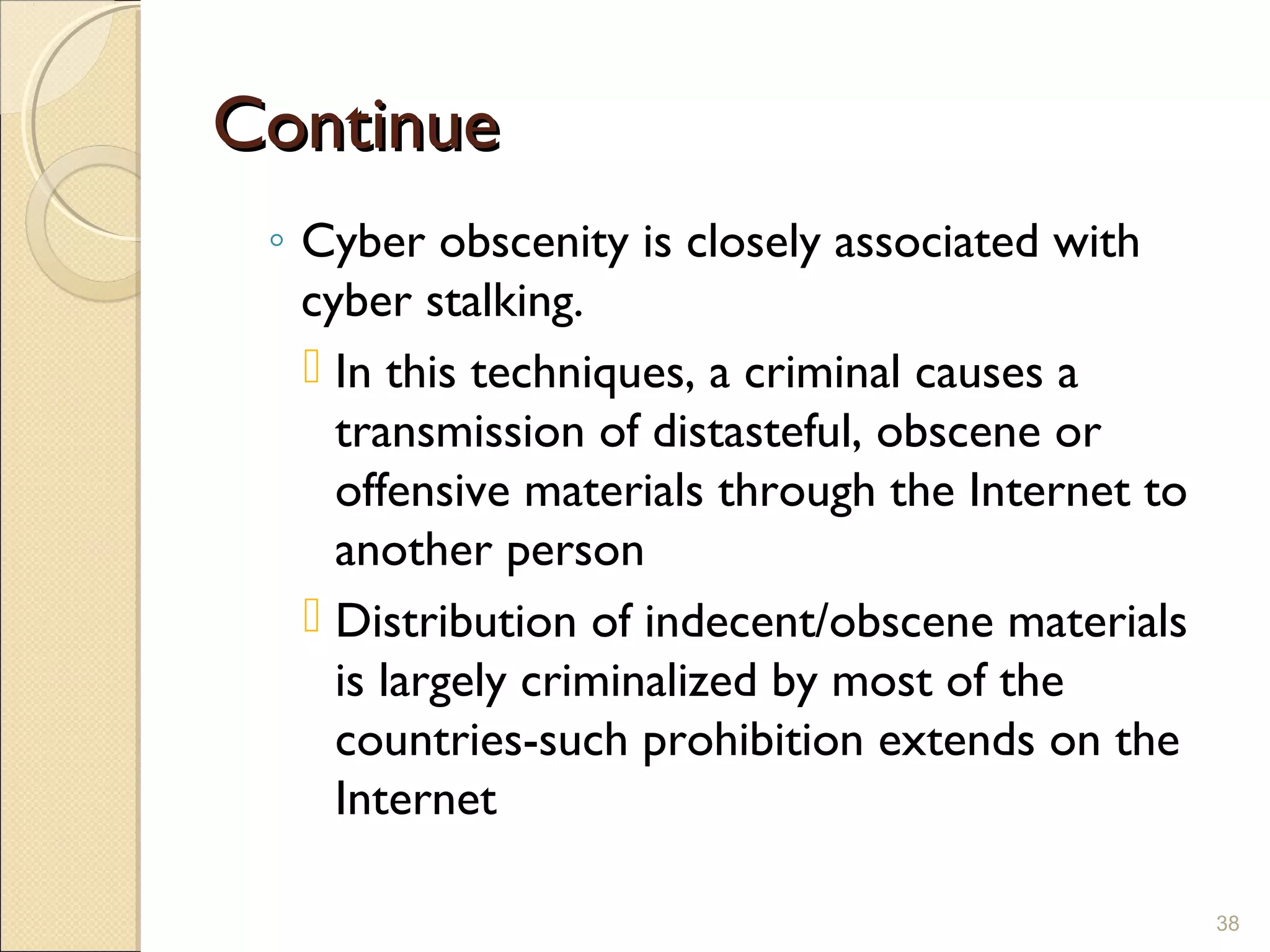
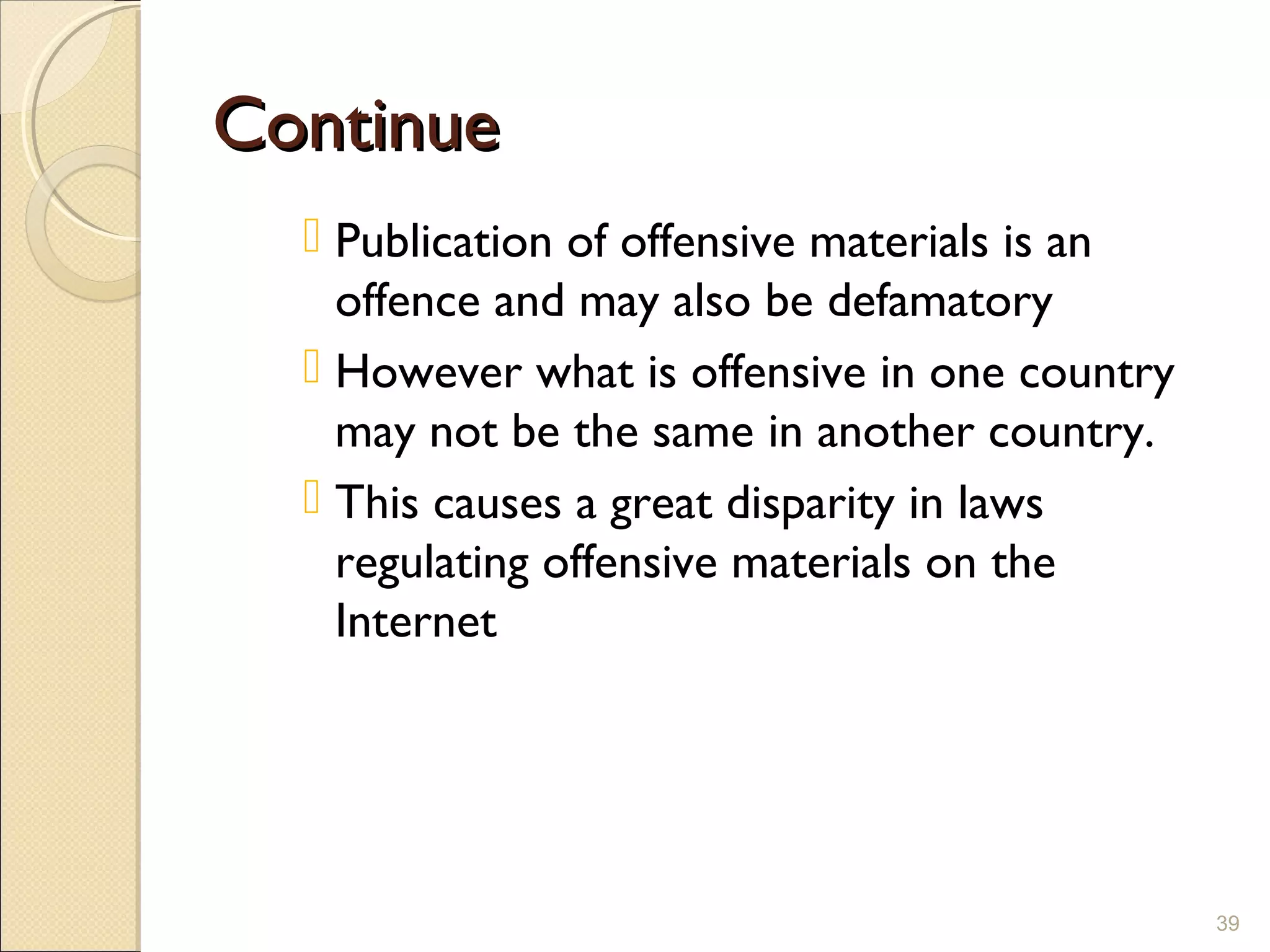
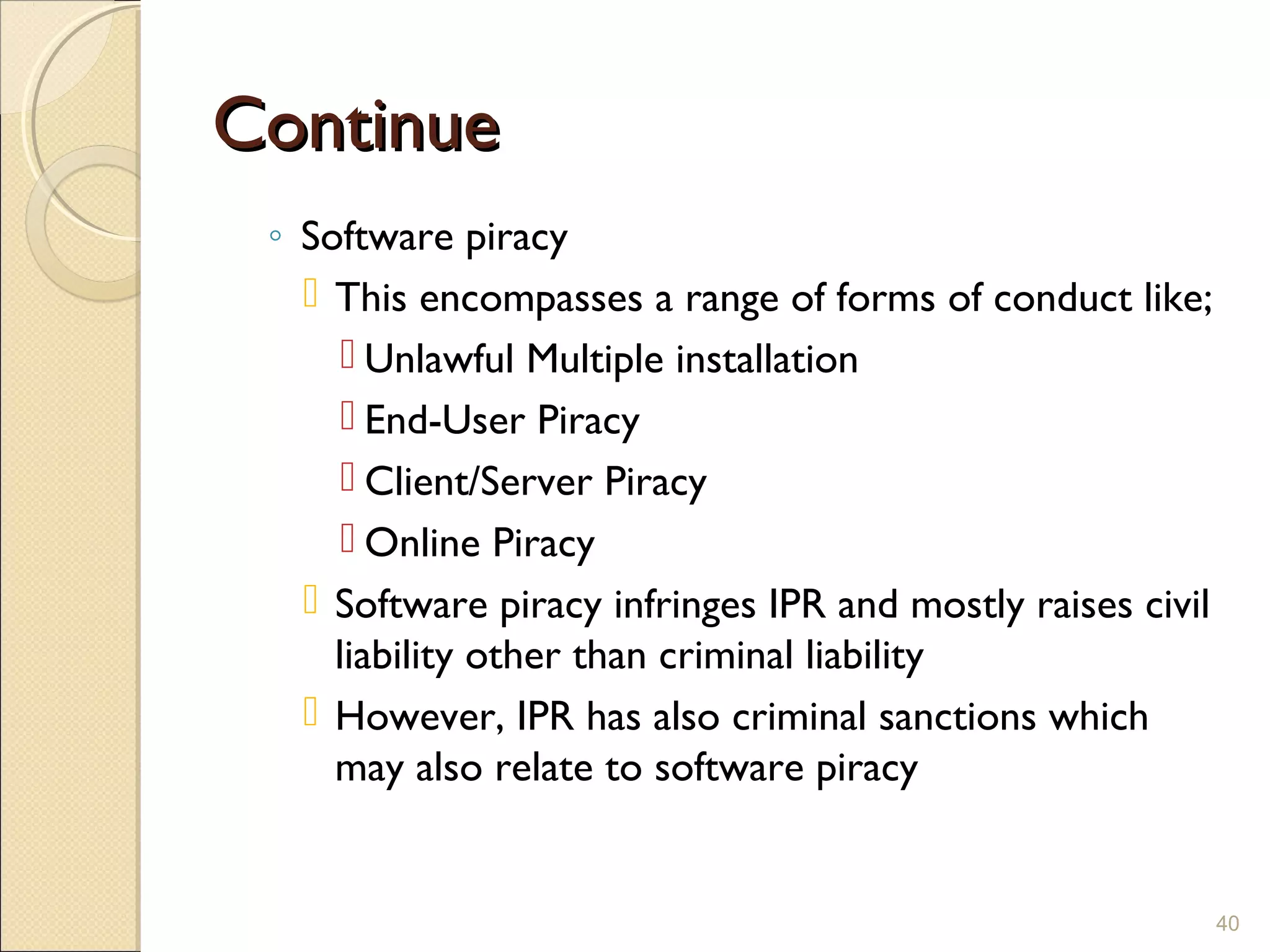
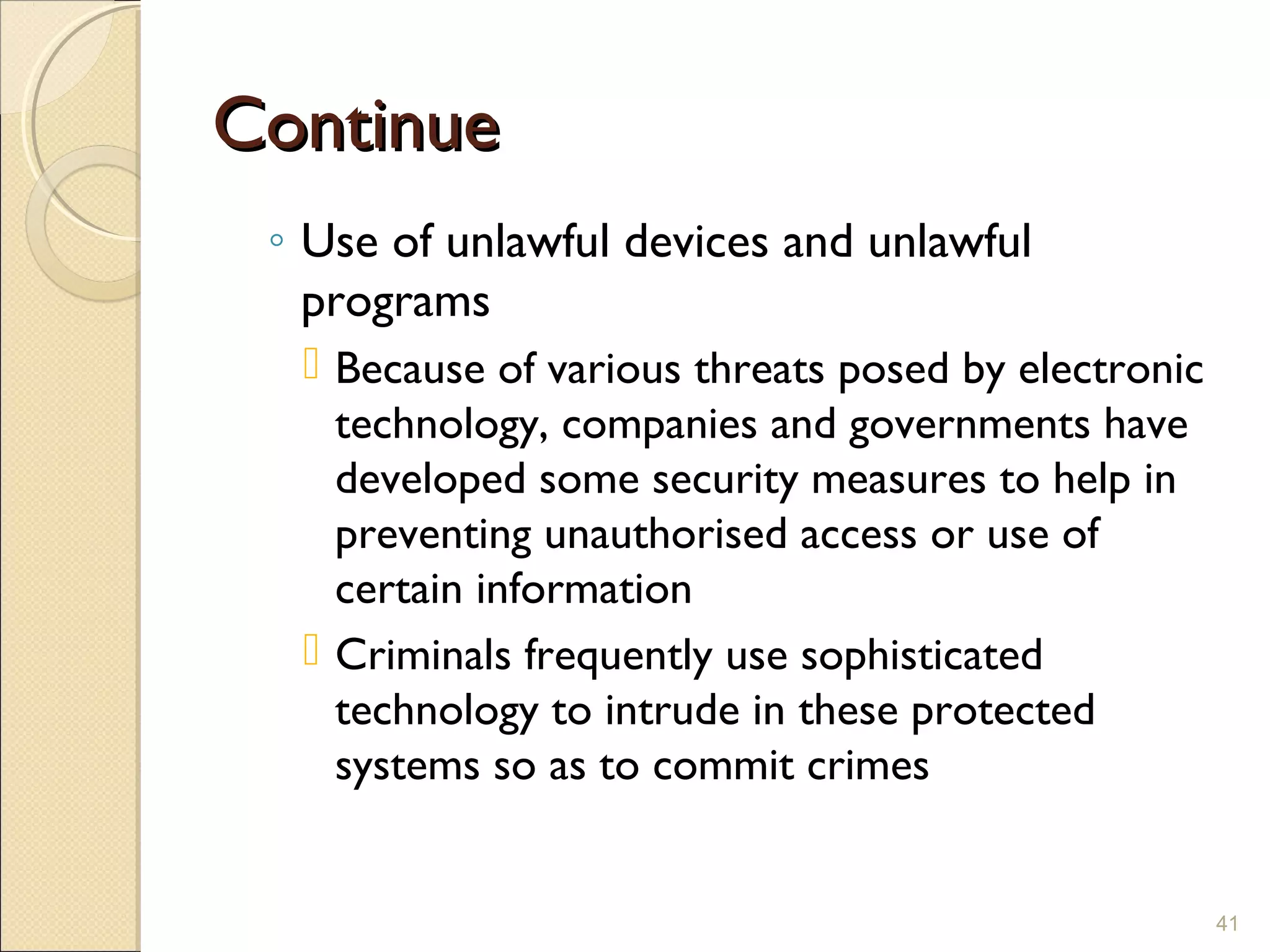
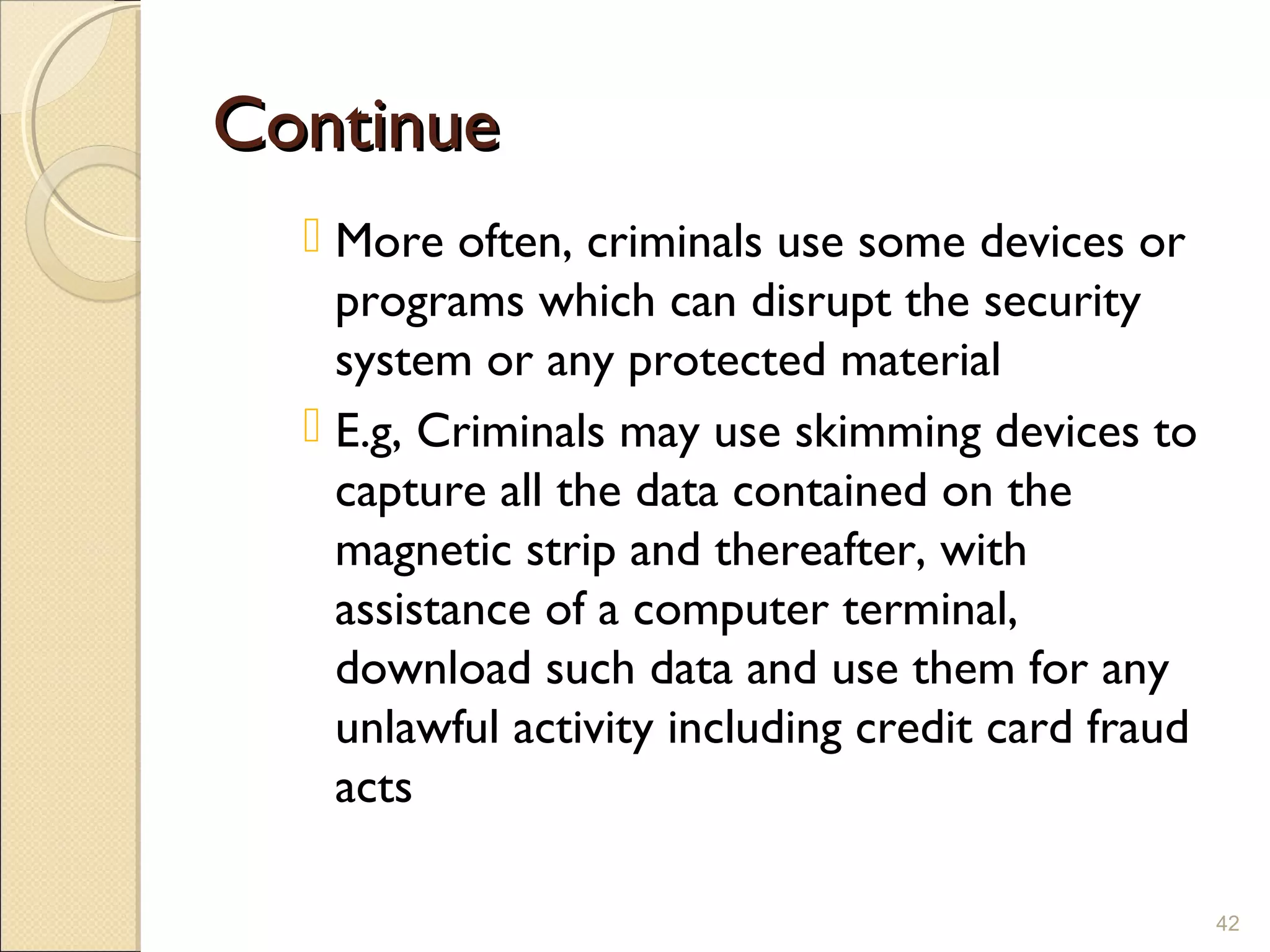
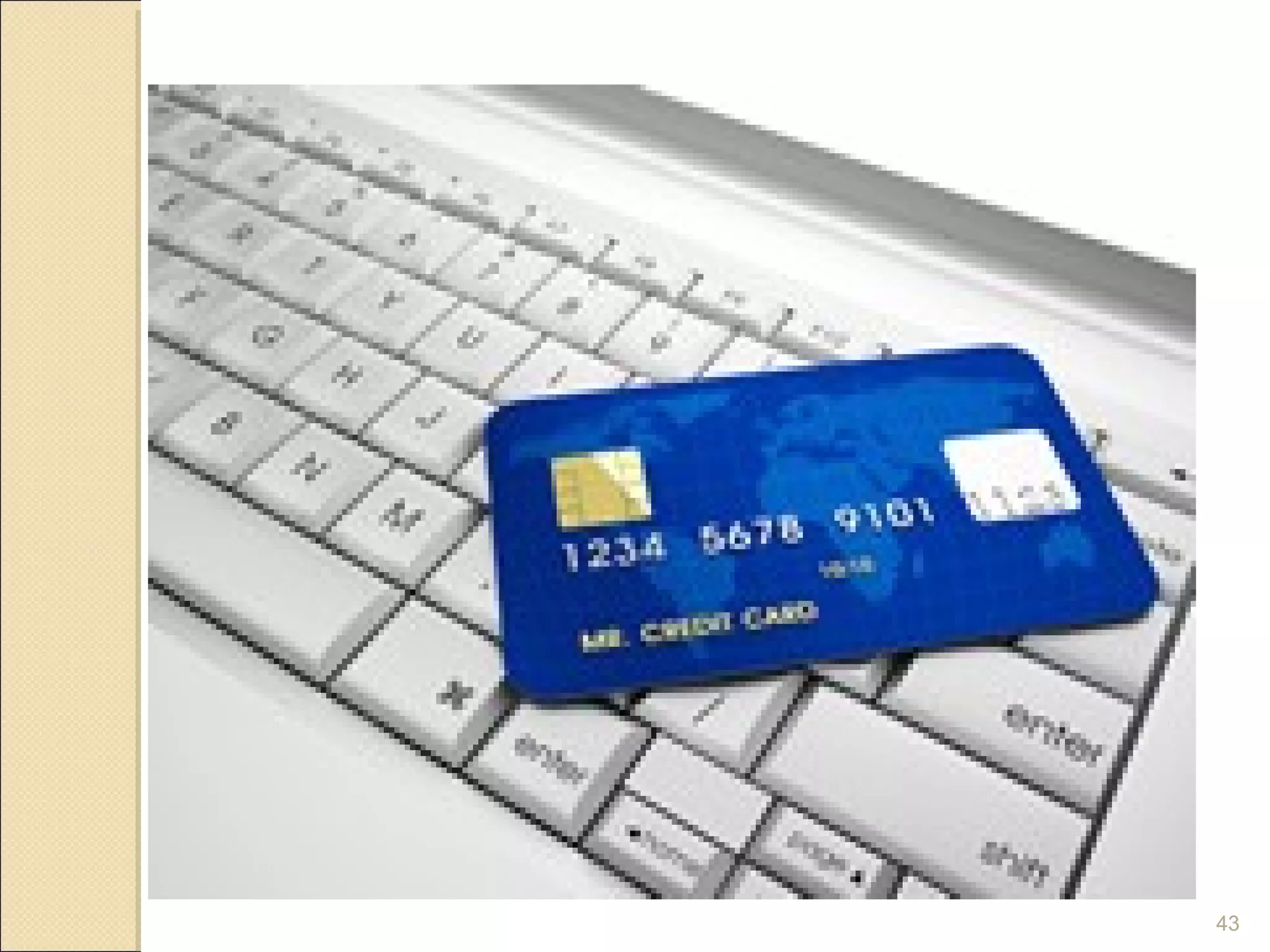
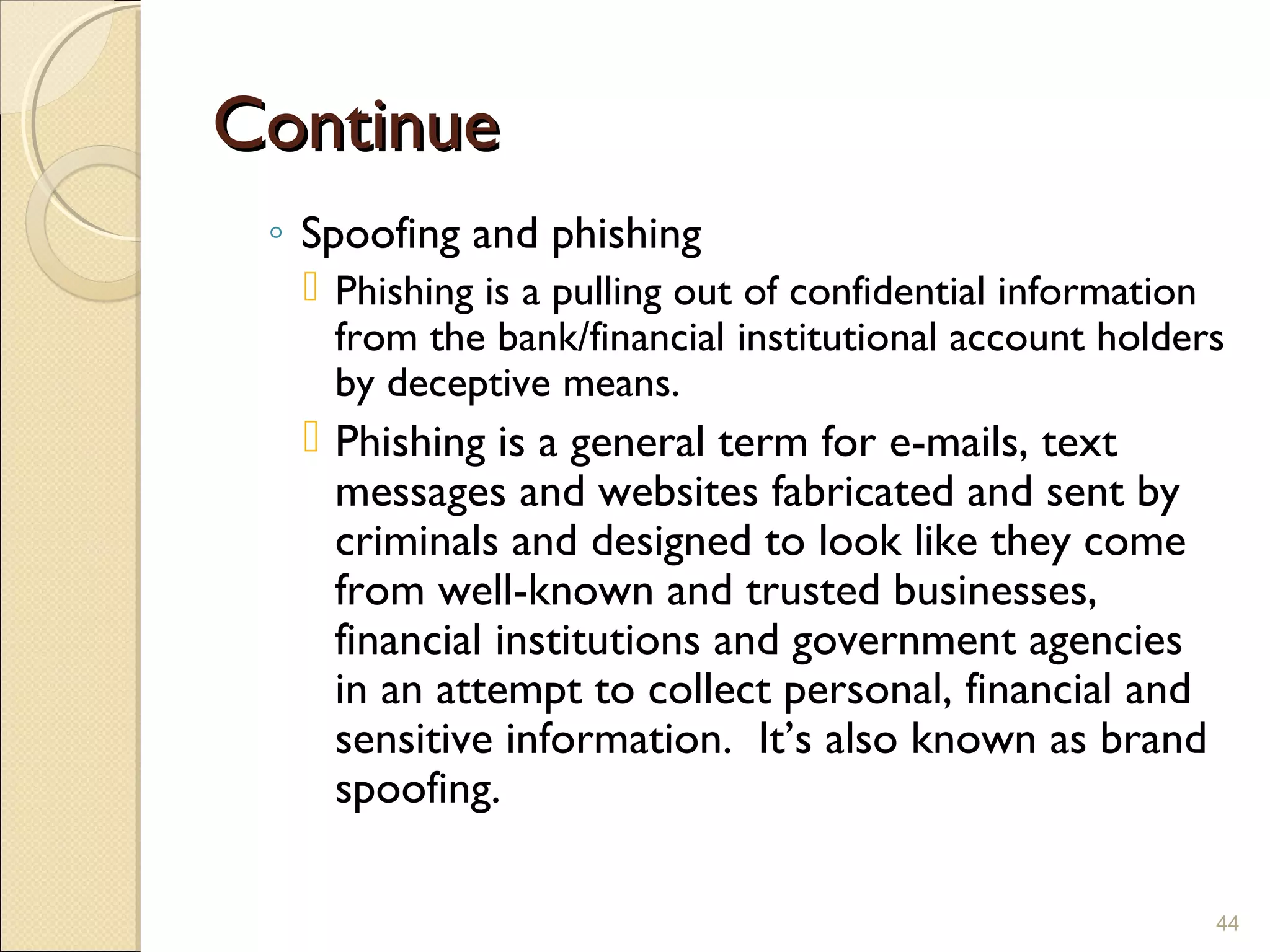
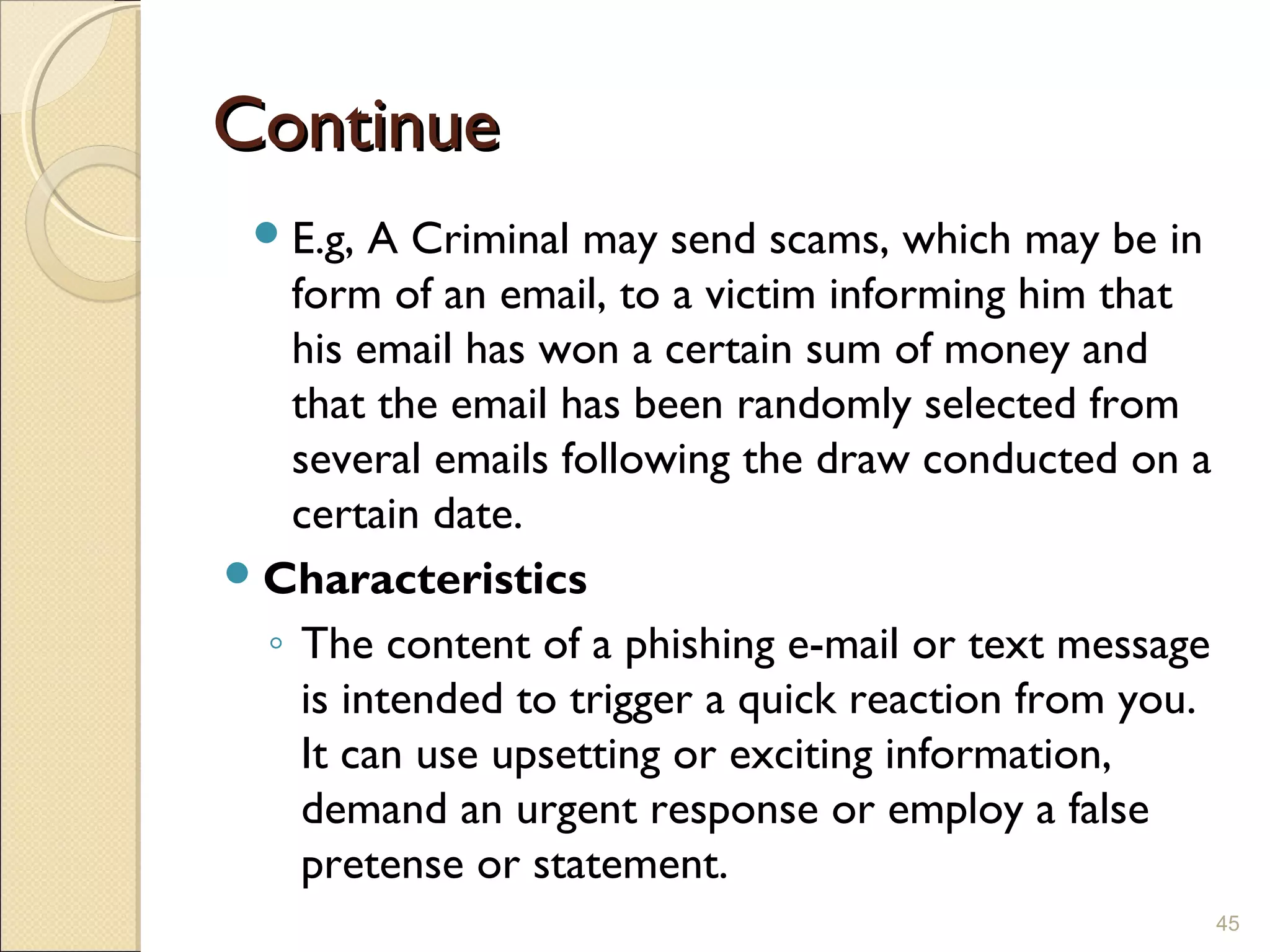
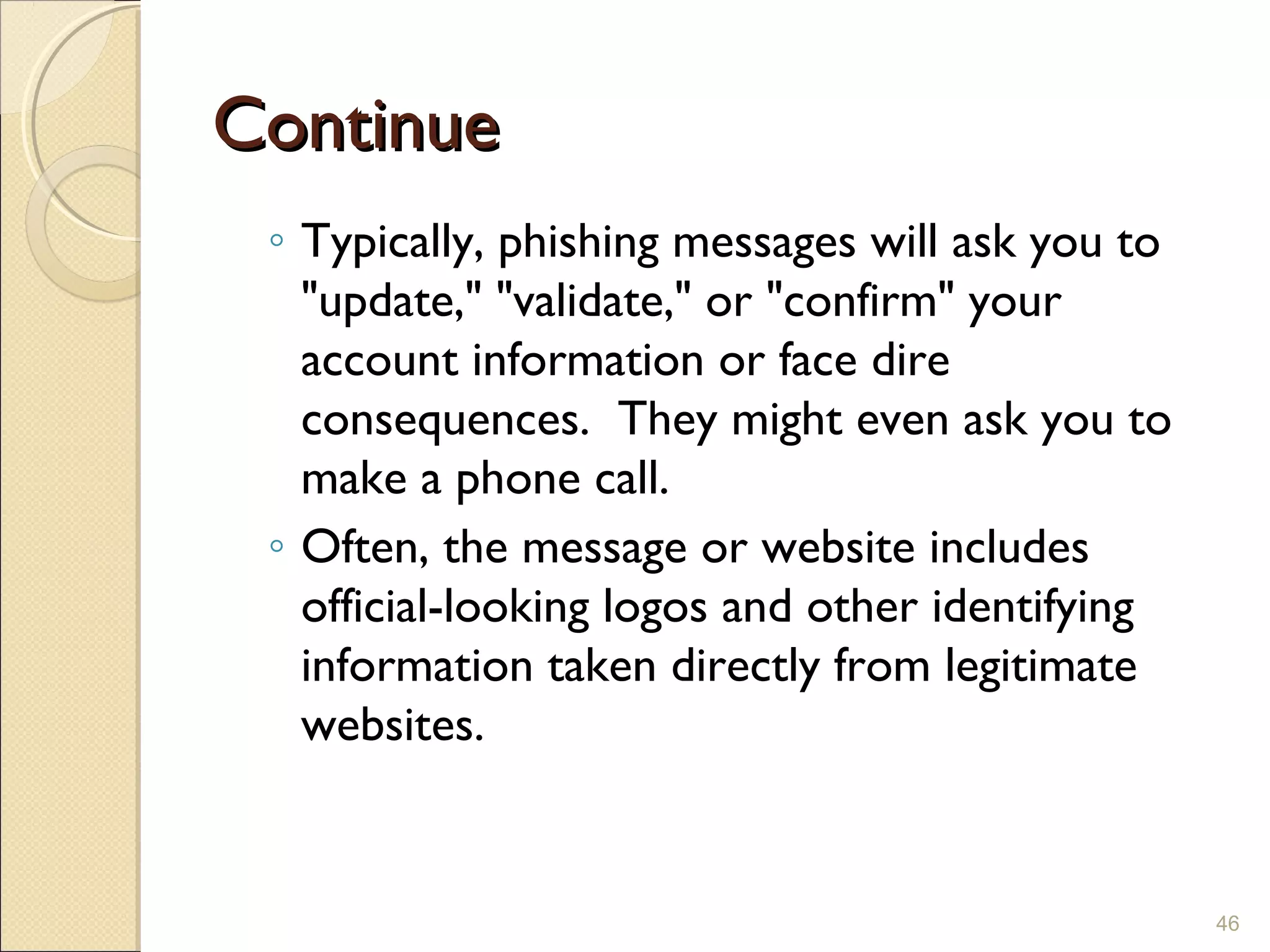
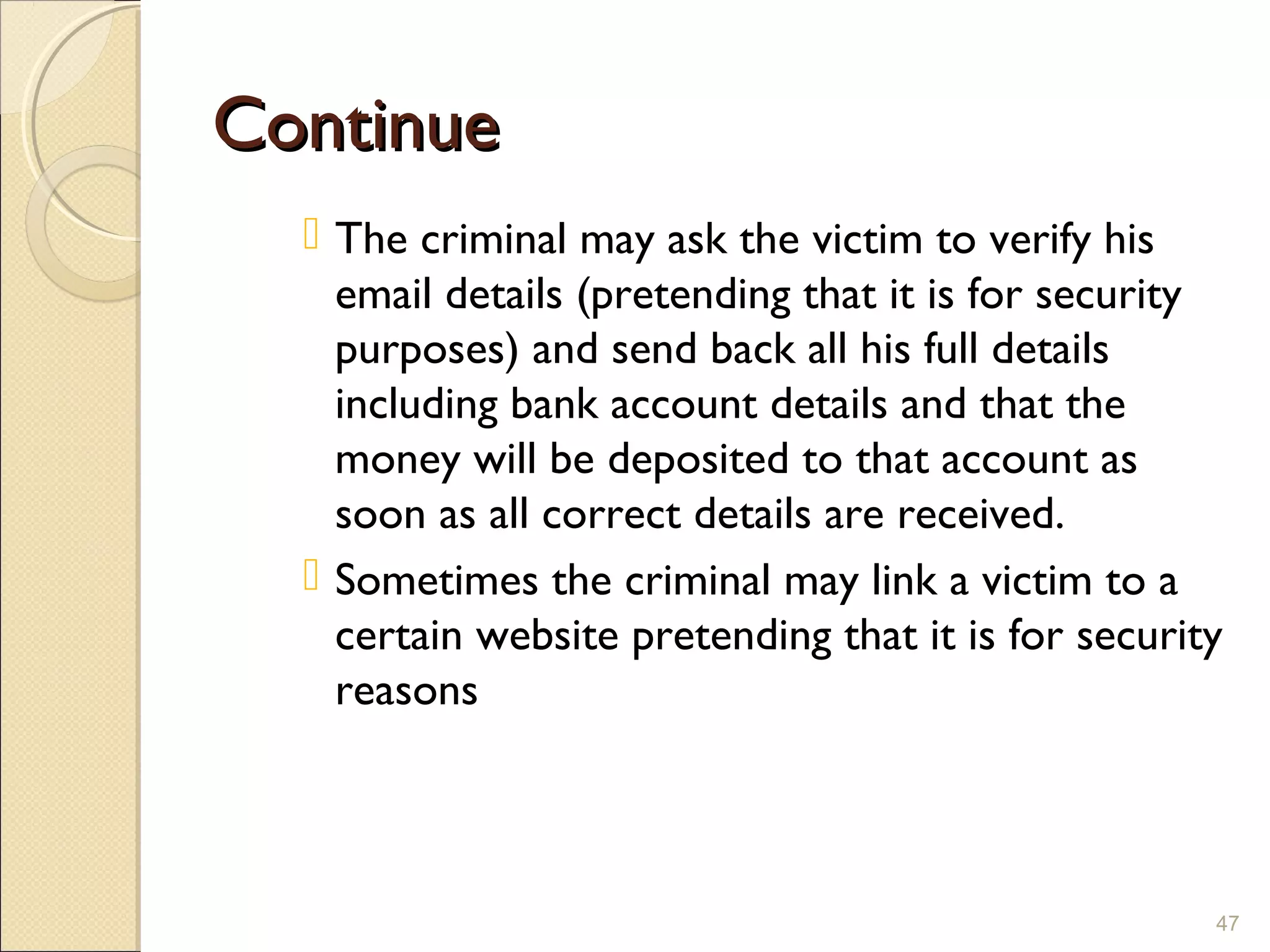

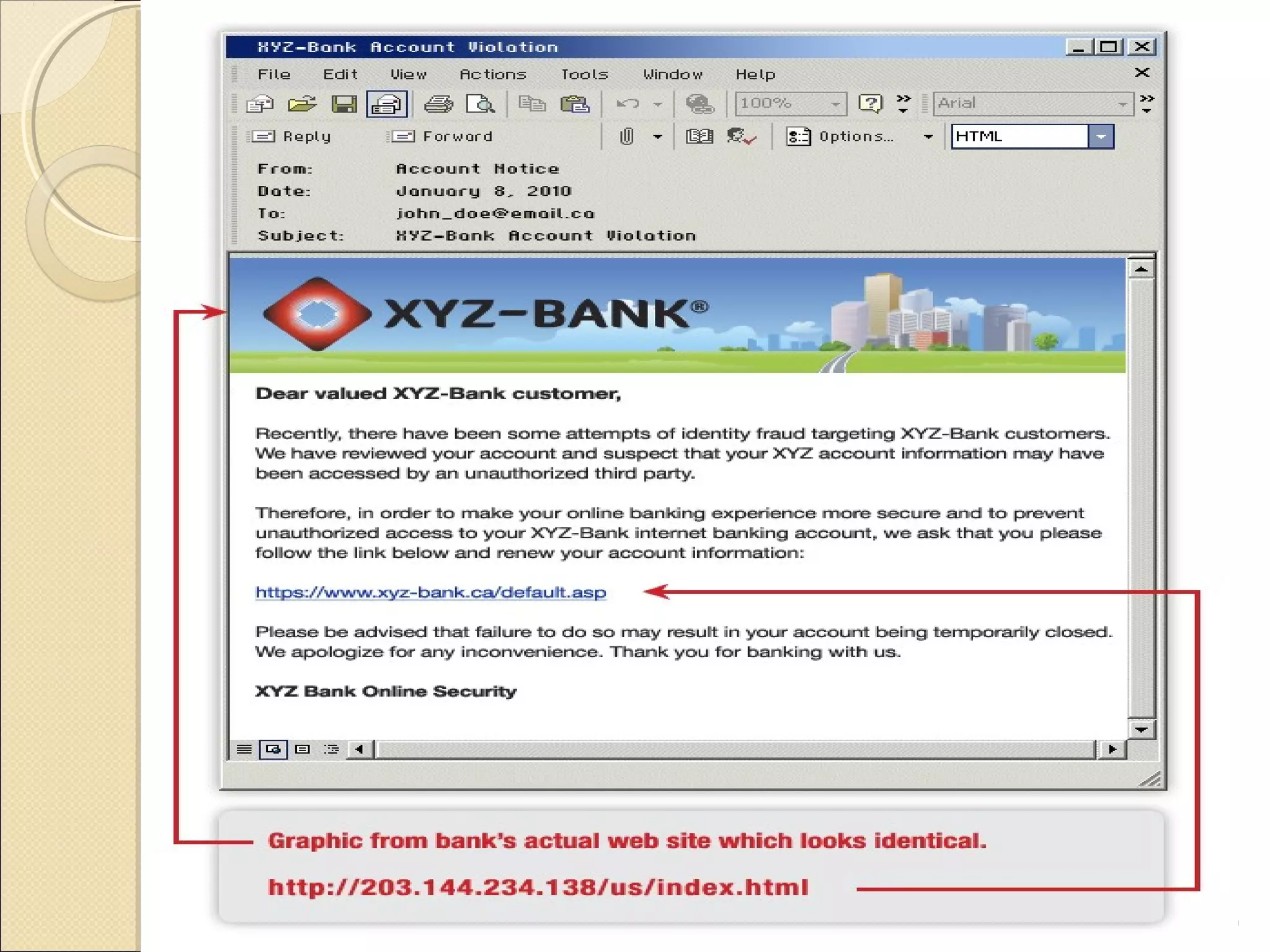
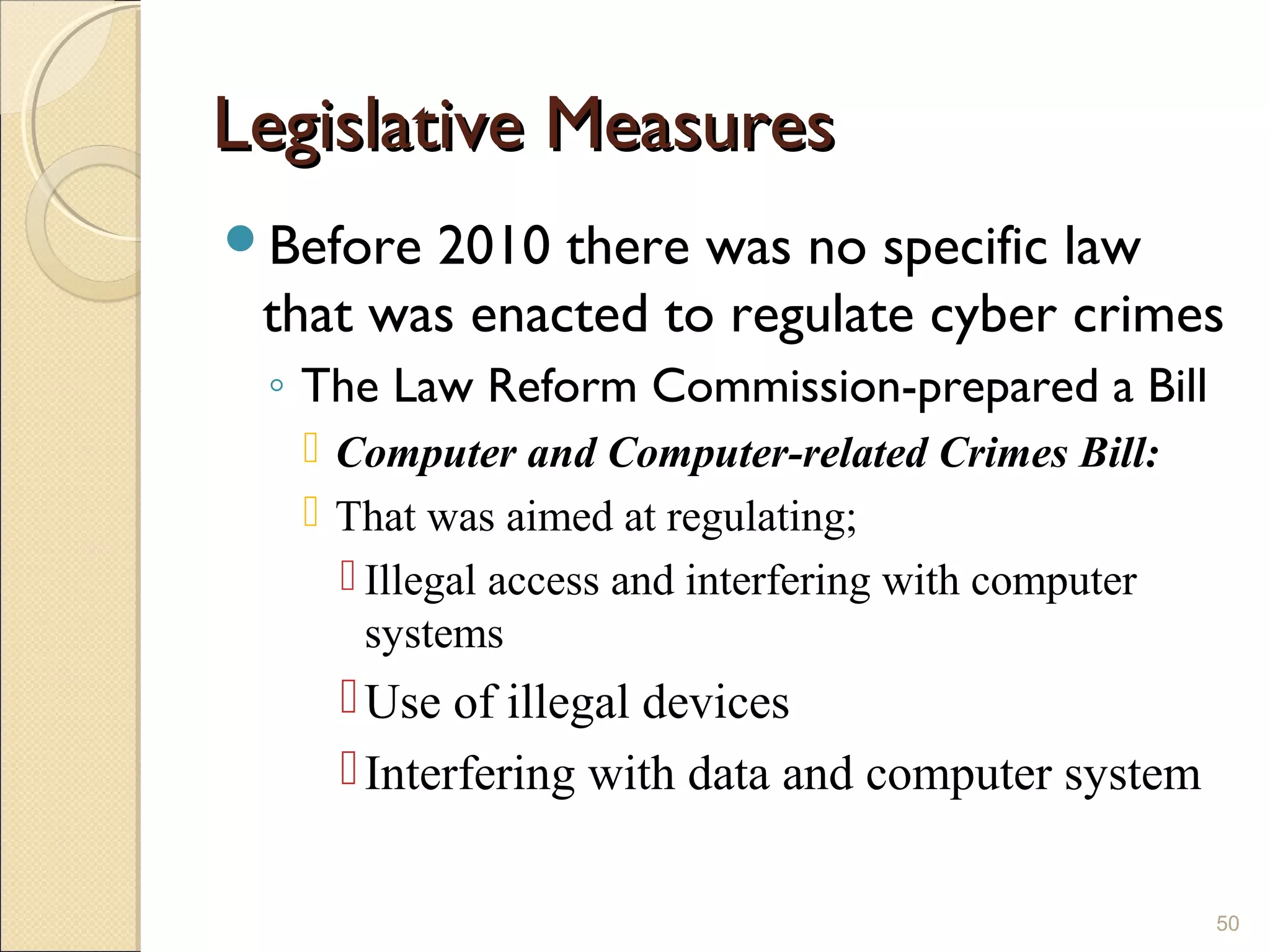


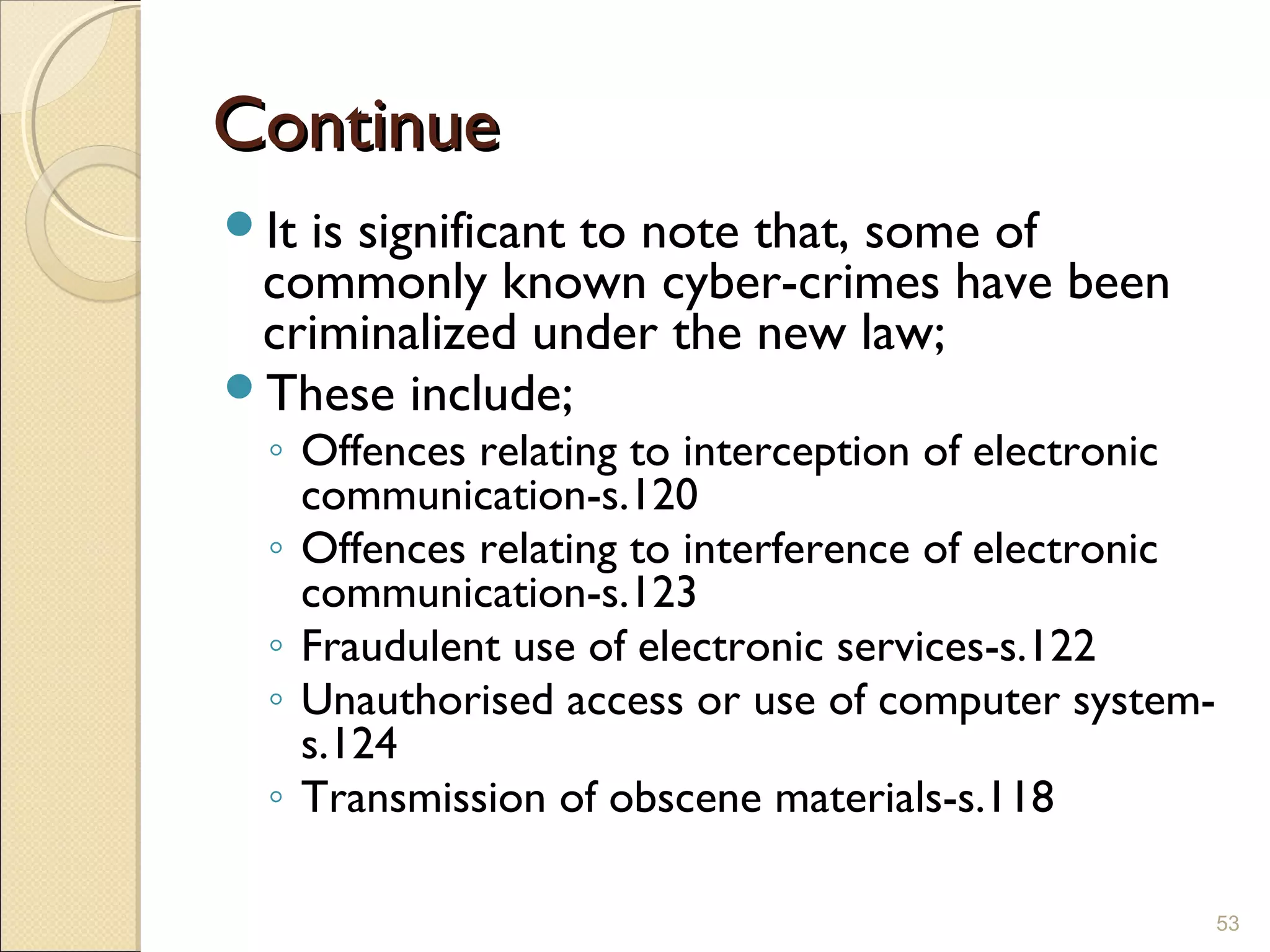
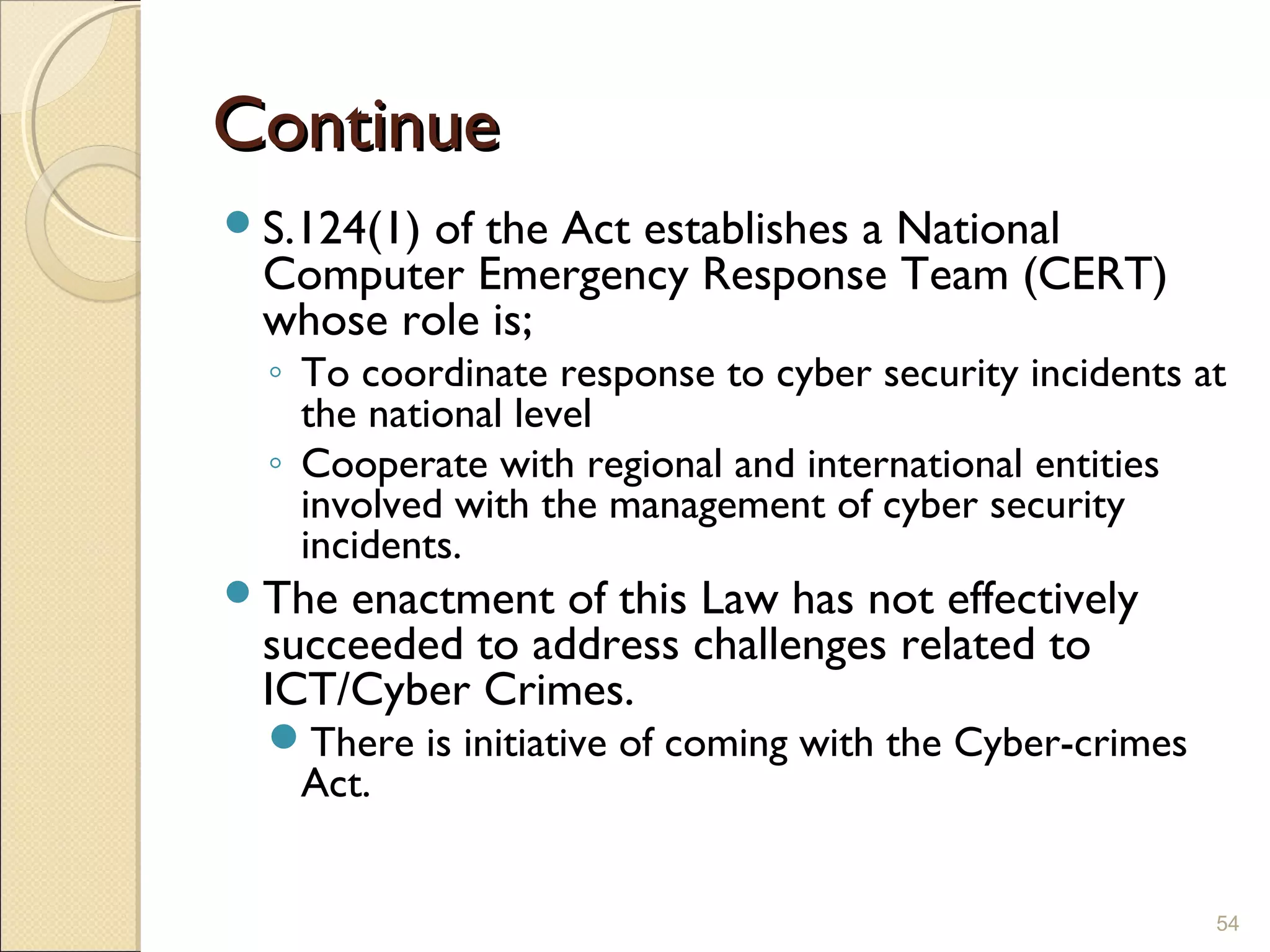
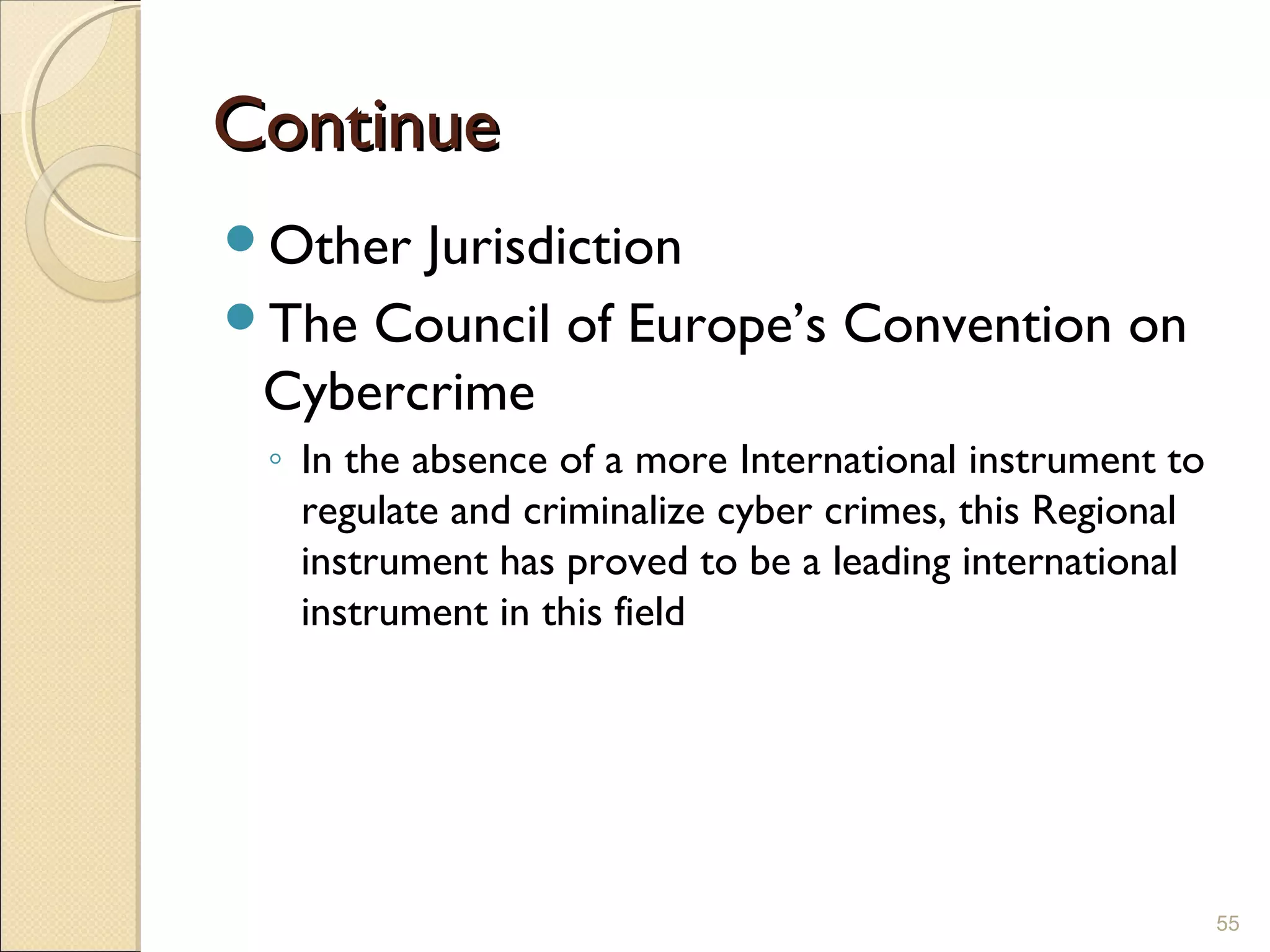
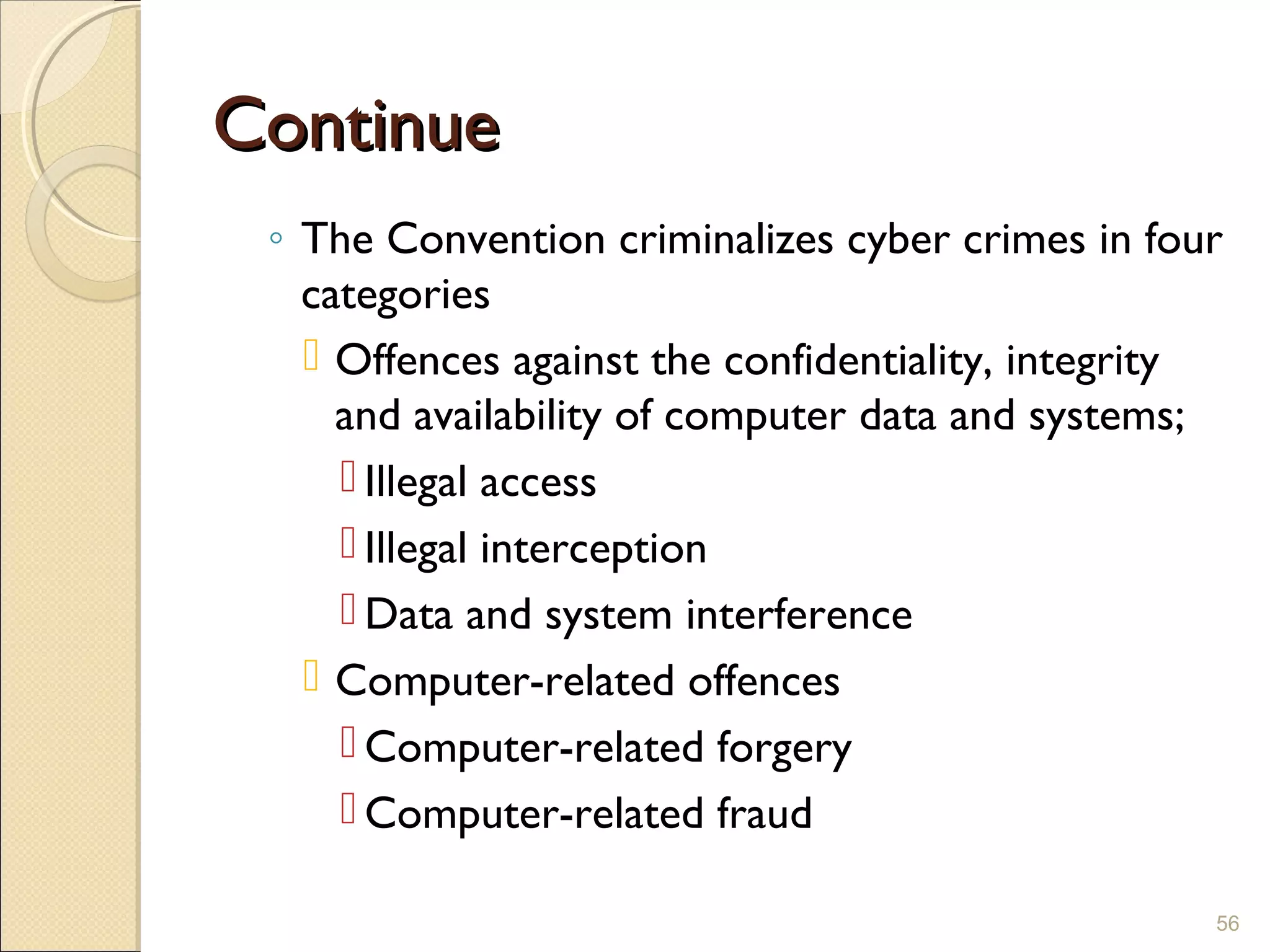

![Case law analysisCase law analysis
Unauthorised access to computer
systems (hacking)
McKinnon v Government of the USA and another
[2008] UKHL 59
Accessed 97 US Navy, Army, Nasa and
Pentagon computers
Read para 11-16 of the case to see the facts
of this case.
The order for his extradition from UK to US
was granted and the appellant was challenging
that order
The House of Lord dismissed his appeal
against extradition.
58](https://image.slidesharecdn.com/itsecuritycrimes-150110031718-conversion-gate01/75/It-security-crimes-58-2048.jpg)
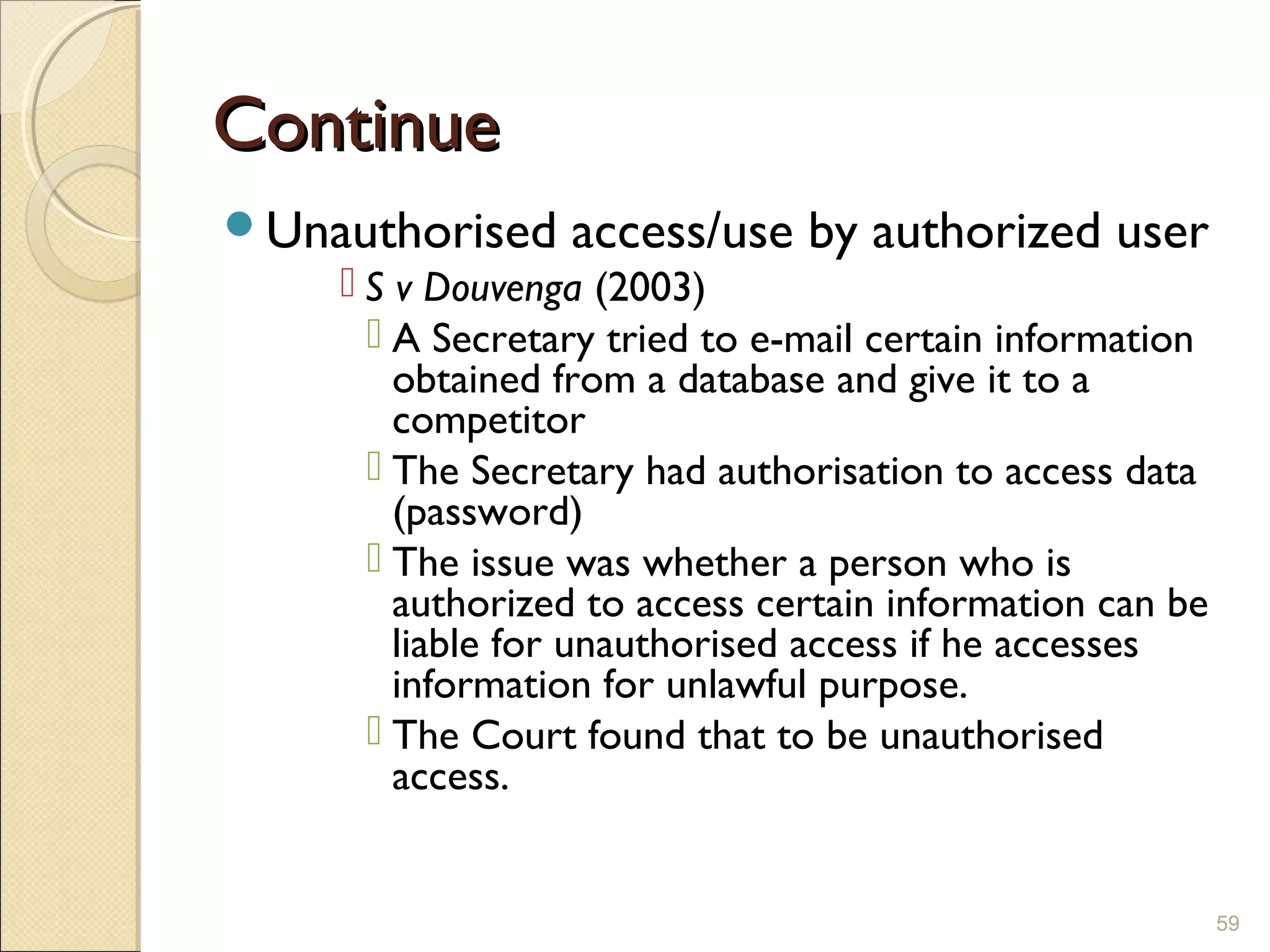
![ContinueContinue
DPP v Bignall (1998) 1 Cr App R 1
Police officers obtained access to data held on
the police national computer for private
purposes
No crime – was entitled to authorised use to
gain access to data
R v Bow Street Magistrates’ Court, ex p Allison
[1999] 4 All ER 1
Authorised access to certain data but this
enabled access to other data
The Court held that Authorisation does not
only relate to type of data but also to type of
access (i.e. purpose of access)-hence a crime 60](https://image.slidesharecdn.com/itsecuritycrimes-150110031718-conversion-gate01/75/It-security-crimes-60-2048.jpg)
![ContinueContinue
◦ Denial of service (DoS) attacks
Flood servers with multiple requests or
congest communication links
DPP v Lennon [2006] EWHC 1201 (Admin)
The accused downloaded mail-bombing
program and used it to bombard his former
employer with e-mails
The Court held-A person does not consent
to receive e-mails which are sent to disrupt
the proper operation and use of the system
61](https://image.slidesharecdn.com/itsecuritycrimes-150110031718-conversion-gate01/75/It-security-crimes-61-2048.jpg)
